Hidden Gems in Barcelona: +35 Unique Non-Touristy Things to Do
The hidden gems in Barcelona are one of the things I love the most about the city!
When you first start looking beyond the popular places, there are all kinds of off-the-beaten-path spots to explore in Barcelona! From beautiful parks and secret gardens to historical monasteries and boutique shops hidden away in cute alleyways, such as Manuel Dreesmann‘s leather atelier in El Born, where you can purchase unique handcrafted leather products.
Exploring Barcelona’s hidden gems is a great way to explore another side of Barcelona and escape the crowds at the most popular tourist attractions in Barcelona, such as Sagrada Familia, La Rambla, Casa Batlló, and Park Güell.
I have lived in Barcelona for nearly 2 years and made it my favorite pastime to explore the hidden gems in Barcelona.
So, whether you are a seasonal traveler to the Catalan capital or an adventurer seeking unique and off-the-beaten-track experiences in Barcelona, this post is for you!
The post unfolds as a neighborhood-by-neighborhood guide to ensure you find the most interesting hidden gems in Barcelona at your fingertips!
Join me on a journey through all the lesser-known hidden gems in Barcelona!
An Expat’s Guide to Hidden Gems and Non-Touristy Things to Do in Barcelona
Disclosure: Some of the links below are affiliate links. This means that at no additional cost to you, Becci Abroad will earn a commission if you purchase through one of those links. This helps to pay the bills and the maintenance of the site.
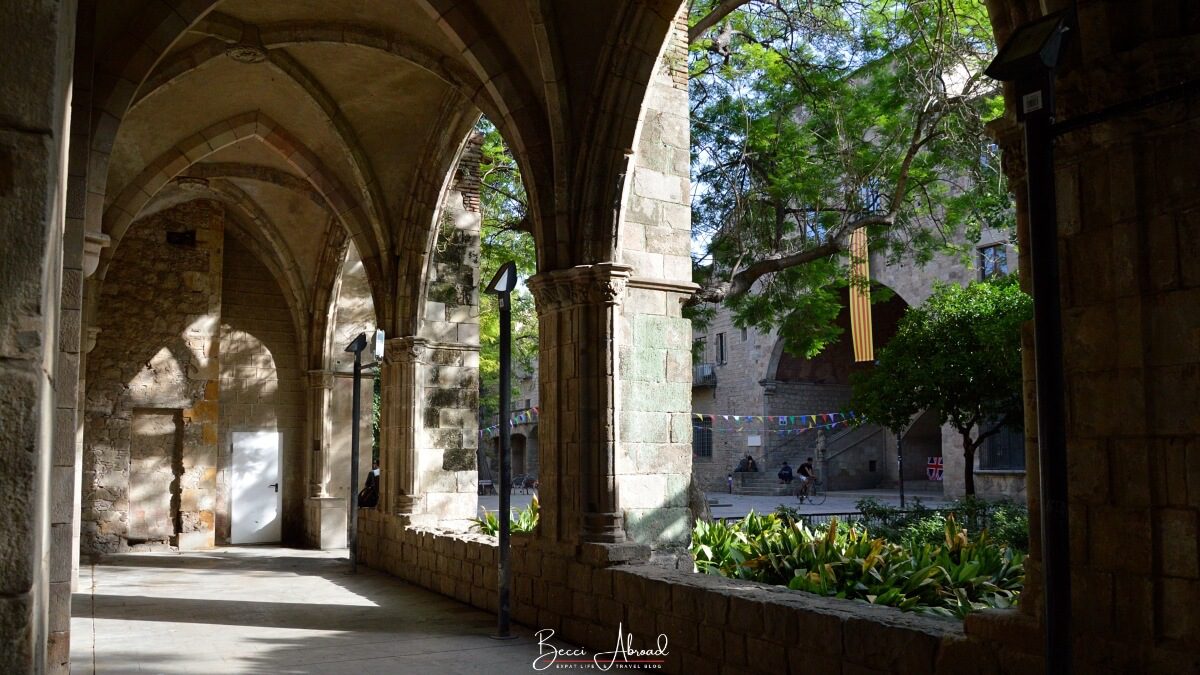
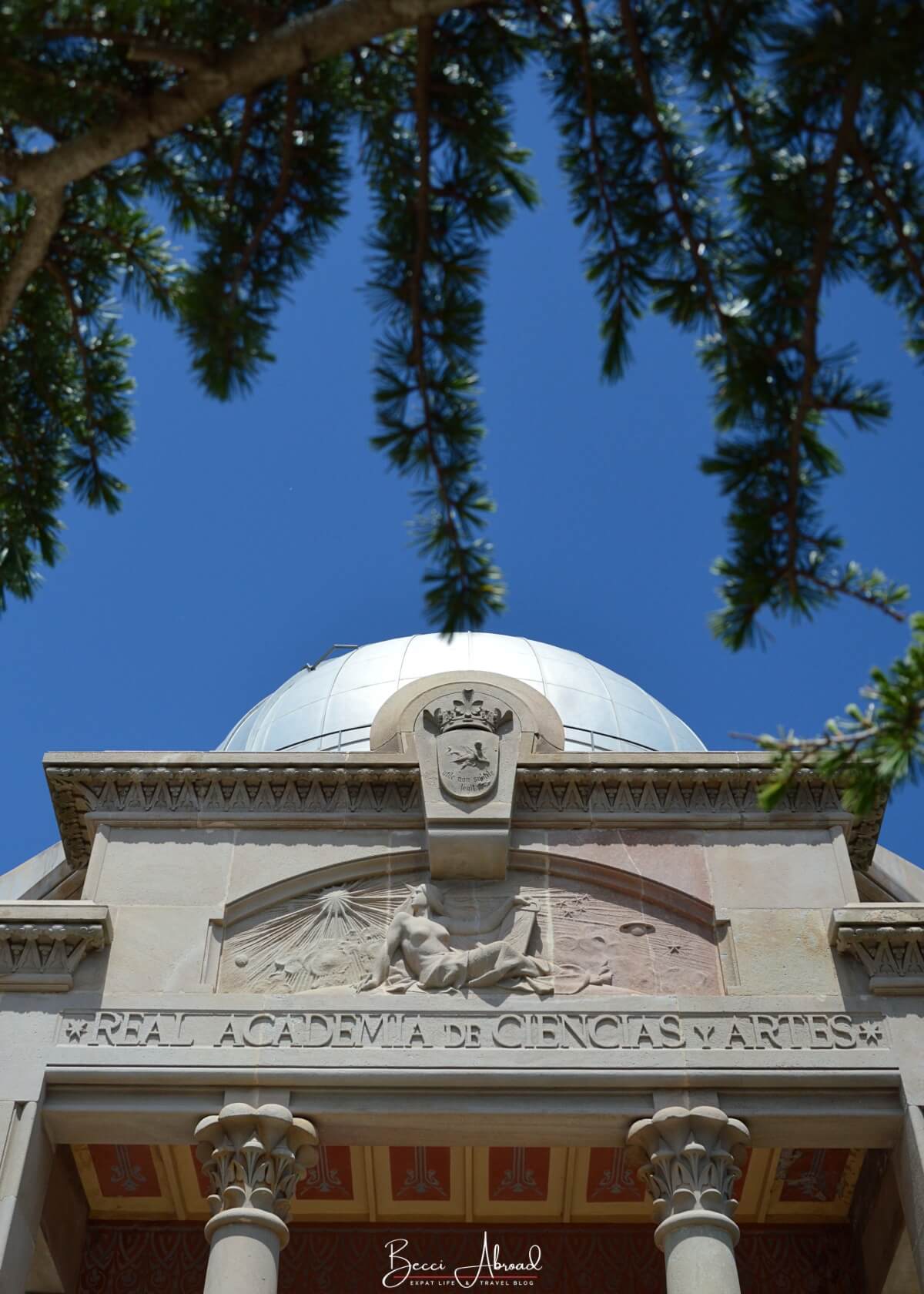
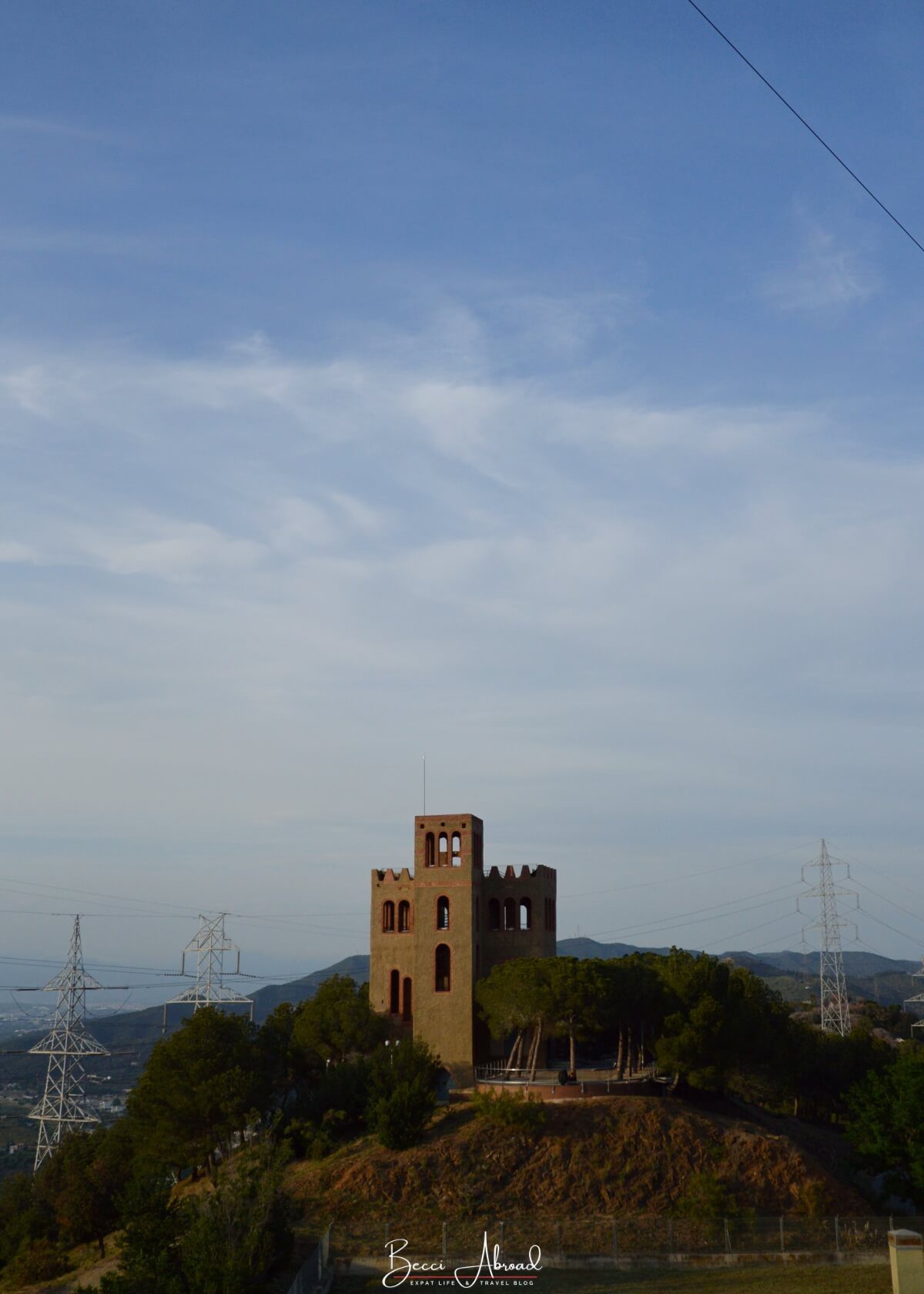
Hidden Gems in Barcelona’s L’Eixample District
Barcelona’s Eixample district is known for its grid-like streets and modernist architecture. The Eixample district houses impressive and famous architectural landmarks such as Casa Batlló, La Pedrera, Plaça de Catalunya, and Passeig de Gràcia.
However, the Eixample district also houses some great hidden gems you shouldn’t miss when visiting Barcelona!
Dine at Art Nouveau Restaurant La Dama
La Dama is one of my favorite hidden gems in Barcelona, and a truly romantic experience if you are traveling as a couple!
This stylish restaurant is located on the first floor of the stunning Casa Sayrach, a modernist building on Avenida Diagonal.
While Casa Sayrach is usually closed to the public, dining at La Dama grants you access to its spectacular entrance hall and staircase, featuring unique curved structures and luxurious decor.
Casa Sayrach was designed in 1918 by Manuel Sayrach, a great admirer of Gaudí’s work, which is reflected in his work. Casa. Sayrach showcases curved lines typical of Catalan modernism, despite the style declining at the time.
The restaurant’s interior retains its 1920s charm with dark wood furniture and original curved windows for a view of Avenida Diagonal.
La Dama is a pricier dining option, but also known for exceptional cocktails and delicious food.
Opening hours:
- Lunch: 1 pm – 4 pm
- Dinner: 6 pm until around midnight.
Make a reservation through their website.
Location: Avenida Diagonal 423, L’Eixample
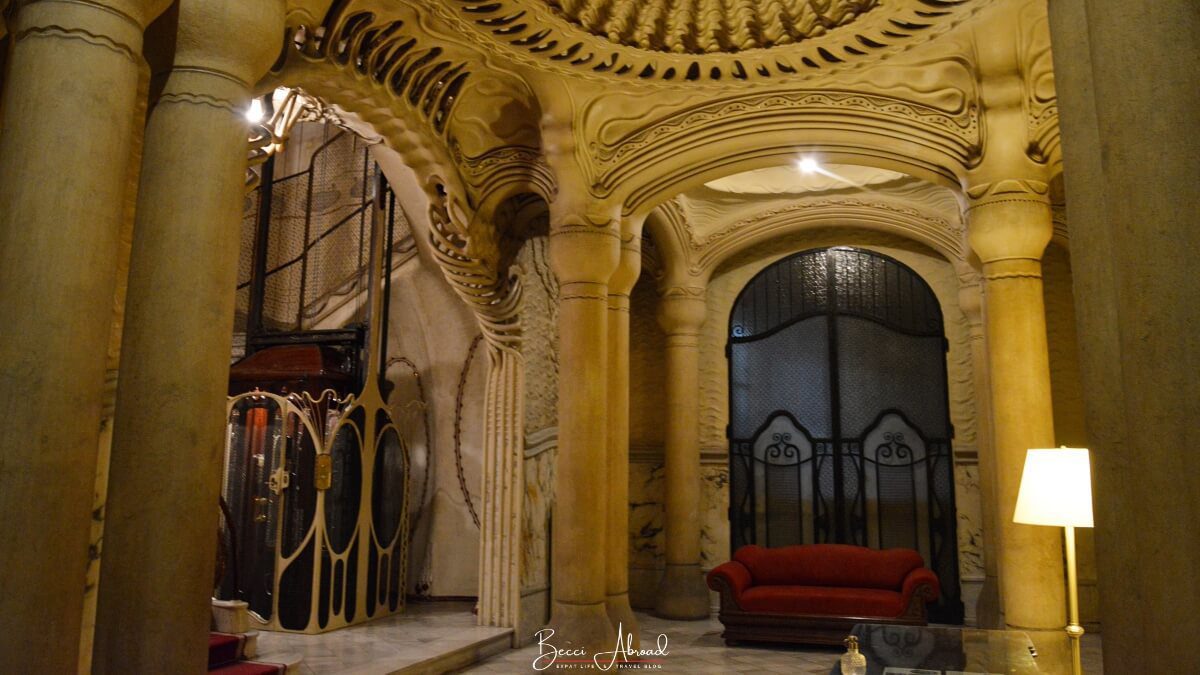
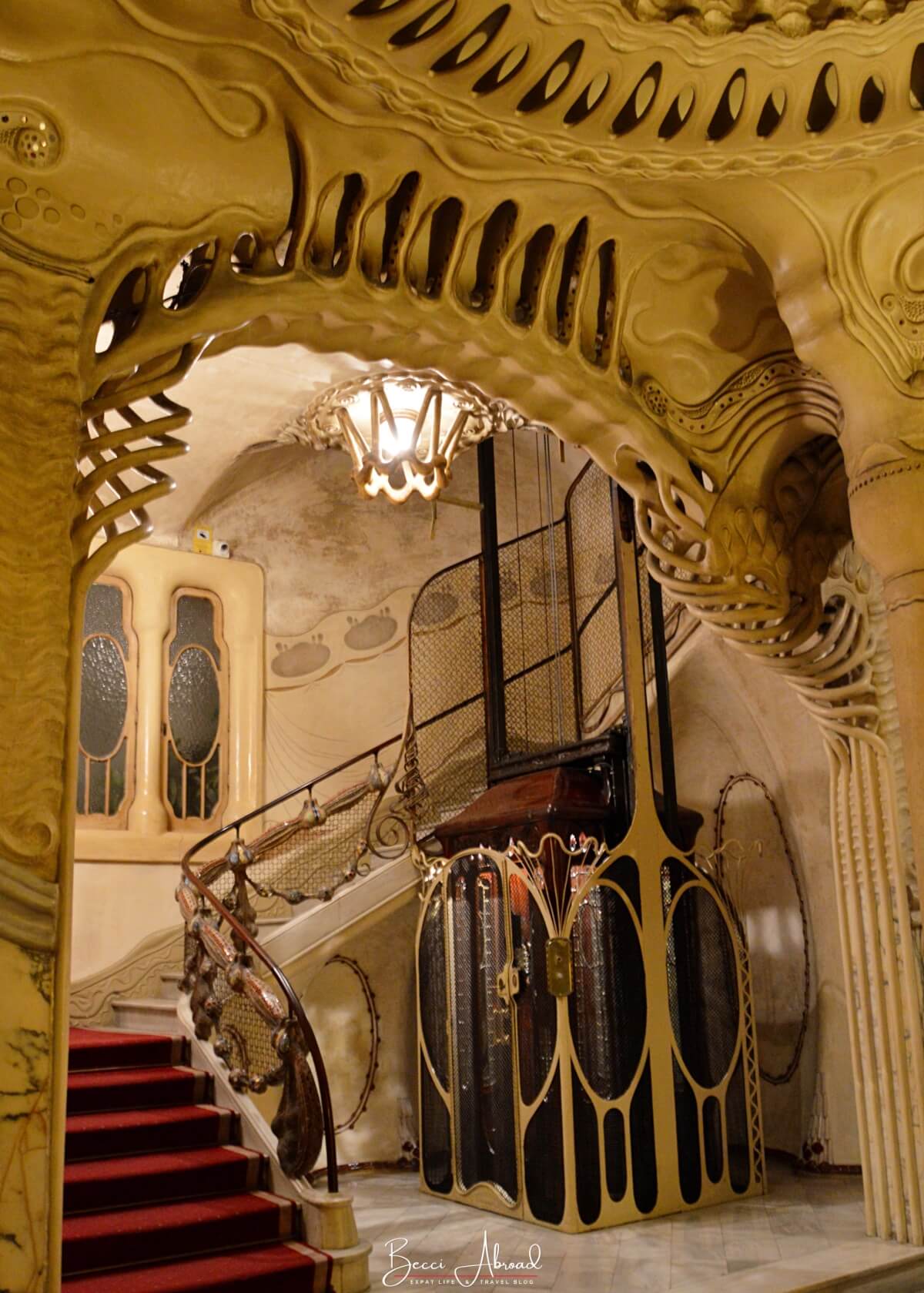
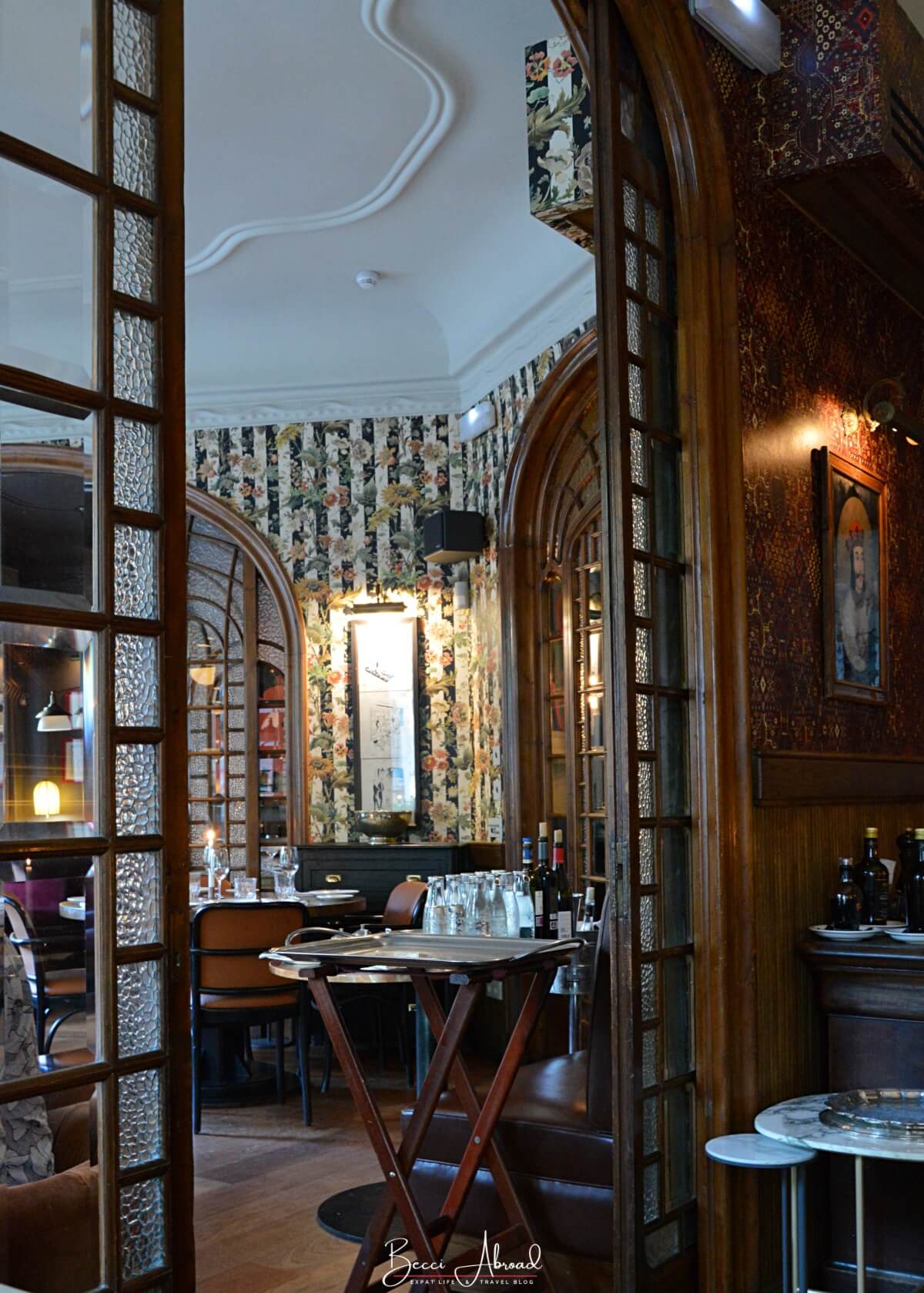
Admire Casa de Les Punxes
Casa de Les Punxes is a must-visit hidden gem in Barcelona for all architect-lovers!
Casa de les Punxes, translated as the “House of Spikes” in English, is a gigantic Gothic castle located on Avenida Diagonal in the city center of Barcelona, only a short walk from the famous Casa Battló and Passeig de Gracia. However, Casa de Les Punxes is often overlooked by tourists heading directly to see the more popular architectural gems.
Casa de Les Punxes sets itself apart from other buildings in the Eixample district with its six-pointed towers, and is properly one of the most easily identifiable hidden gems in Barcelona – how can you miss a gigantic medieval-looking castle?
The castle was designed by the Catalan modernist architect Josep Puig i Cadafalch in 1905. The construction project was commissioned for the Terradas family who wished to combine three separate houses for each of Bartomeu Terradas i Mont’s daughters into one large mansion. The building’s alternative name is therefore also Casa Terradas or the Terradas’ House.
In 2021, the mansion was turned into an event- and coworking space by the local company Cloudworks.
Casa de Les Punxes is a private property, and it’s only possible to visit if you book a space or attend an event with Cloudworks. On the ground floor, there is a small restaurant called Wild Food where you can grab a bite to eat.
Location: Avenida Diagonal 416-420, L’Eixample
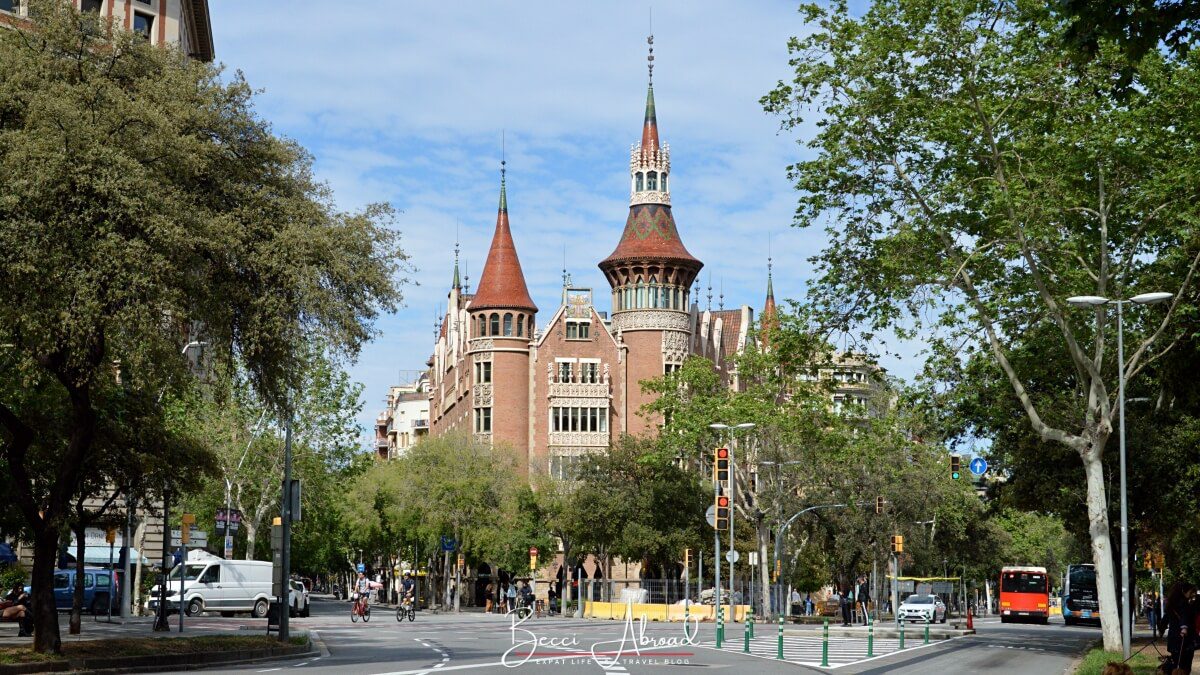
Visit Barcelona’s Forbidden Art Museum
What better hidden gem in Barcelona than to explore a whole selection of censored art?
Barcelona’s Forbidden Art Museum, Museu de l’Art Prohibit in Catalan, is the first art museum to feature censored and forbidden art!
This hidden gem in Barcelona features art from well-known artists such as Francisco de Goya, Gustav Klimt, and Pablo Picasso.
The Museu de l’Art Prohibi features both important previously censored artworks as well as examples of collective creativity, for example, expressed through a wide variety of memes.
Opening hours:
- Monday to Sunday: 10 am to 8 pm.
- Closed on Tuesdays (except public holidays).
Location: Carrer de la Diputació 250, L’Eixample
Try Local Catalan Cusine at Restaurant Queviures Múrria
Queviures Múrria, also known as Colmado Múrria, is one of the oldest commercial establishments in Barcelona.
Queviures Múrria dates back to 1898, and the facade features Modernist signs and adverts made in fire-tinted glass created by Catalan modernist painter Ramon Casas.
The store first opened as a coffee roaster and a rolled wafer manufacturer. Later, it became a charcuterie with local and international specialties.
After a renovation in 2022, Queviures Múrria reopened as a charcuterie and a restaurant.
The food at Queviures Múrria is delicious, and they are a large selection of wine. So, don’t fool yourself, for a glass of wine is a good idea when visiting!
There isn’t a lot of seating in the small charcuterie shop, but it is an unforgettable experience of traveling back in time.
Opening hours: Monday to Saturday: 11 am to 10 pm.
Reserve a table on their website.
Location: Carrer de Roger de Llúria, 85, L’Eixample
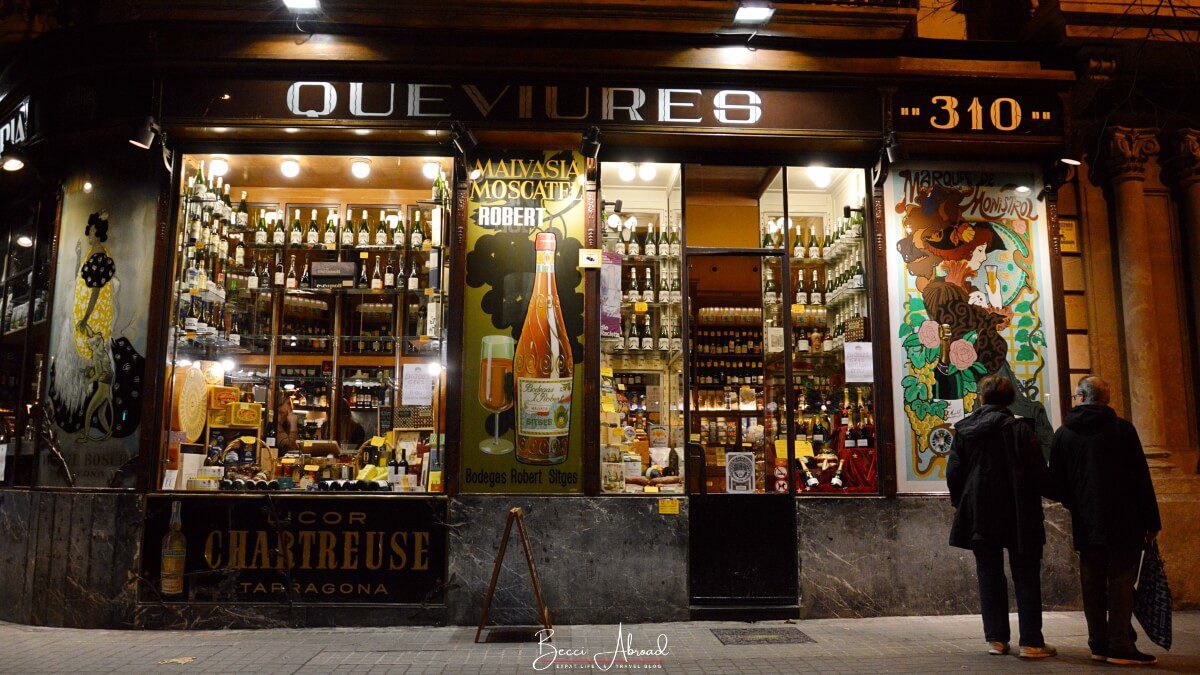
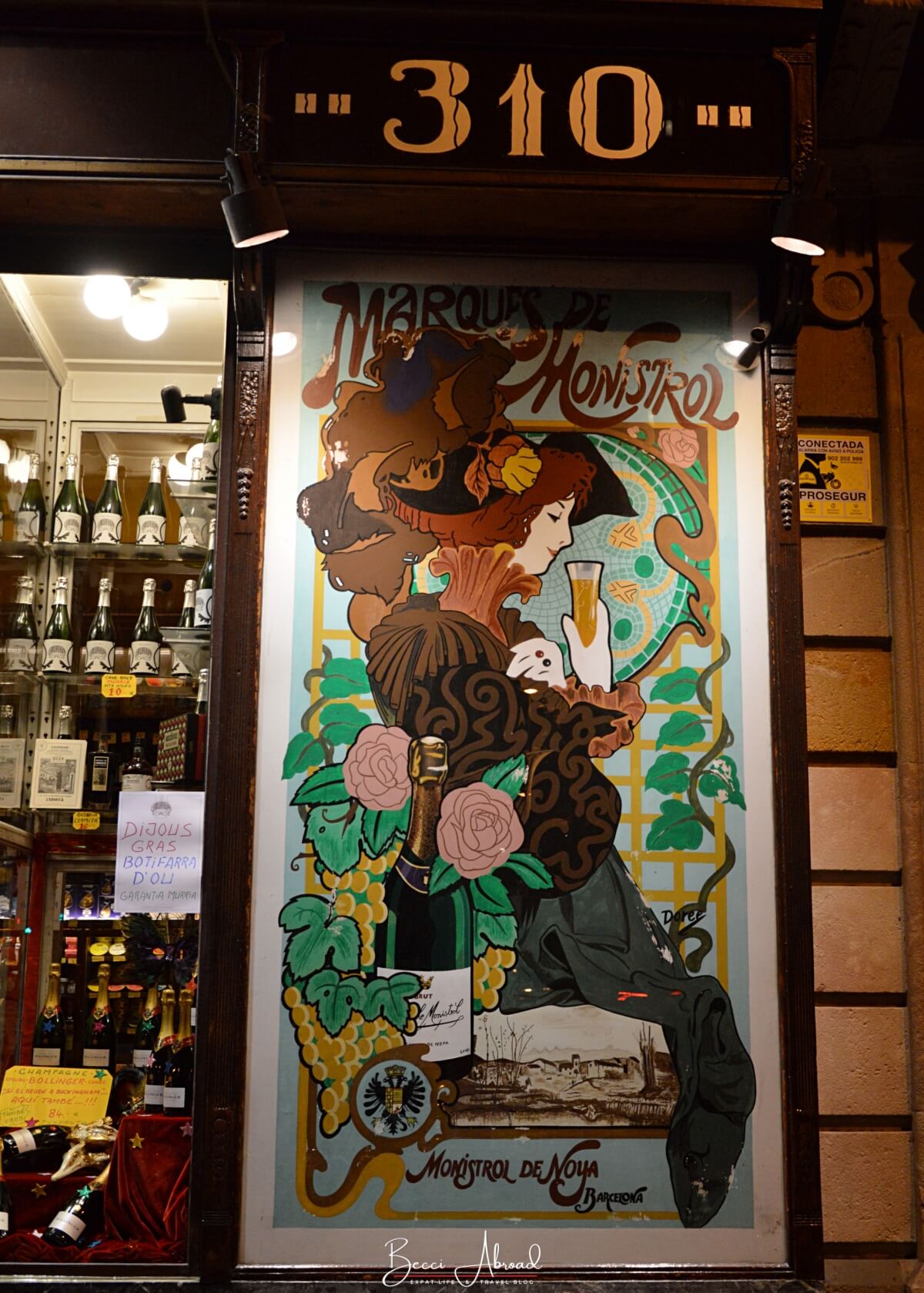

Enjoy a Tranquil Break at Muñoz Ramonet Gardens
The Muñoz Ramonet Gardens, officially known as Jardí de la Fundació Julio Muñoz Ramonet, is a private garden now accessible to the public.
This charming green oasis in Barcelona features verdant greenery, ponds, and fountains, providing a delightful retreat from a day filled with sightseeing in Barcelona.
The gardens encircle the mansion of Julio Muñoz Ramonet, a prominent Spanish businessman who bequeathed his estate, including the garden and his impressive art collection, to a foundation that carries his name.
The secret gardens are nestled in the L’Eixample neighborhood on the border of Gracia.
The Muñoz Ramonet Gardens are the perfect hidden gem in Barcelona for a peaceful escape from the city’s tourist crowds.
Opening hours: Daily: 10 am – 8 pm.
Entrance fee: Free of charge.
Location: Carrer de Muntaner, 282, Sarrià-Sant Gervasi

Explore the Hidden Courtyard at Basílica de la Purísima Concepción
Basílica de la Purísima Concepción is a beautiful hidden gem in Barcelona. The beautiful Catholic church is nestled between tall buildings in the heart of Barcelona’s L’Eixample district, and the entrance and its courtyard are often overlooked by by-passers.
The Basilica’s full name is Basílica de la Puríssima Concepció i Assumpció de Nostra Senyora which translates to “the Basilica of the Immaculate Conception and Assumption of Our Lady”.
The current structure combines elements from an old church, San Miguel, and the relocated Jonqueres Monastery, whose remains create the beautiful courtyard.
This hidden gem in Barcelona offers a tranquil escape from the busy streets, perfect for enjoying the church’s medieval atmosphere.
Opening hours: Daily: 7:30 am – 1 pm & 5 pm to 8:30 pm
Entrance fee: Free of charge
Location: Carrer de Roger de Llúria, 70, L’Eixample
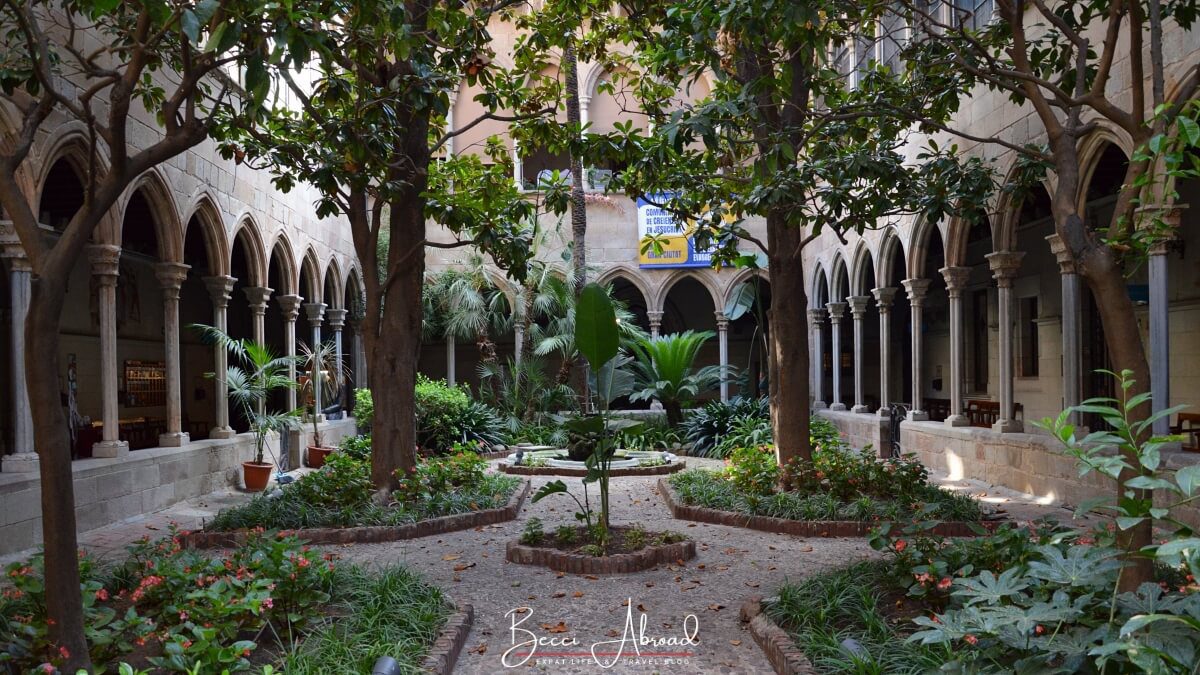

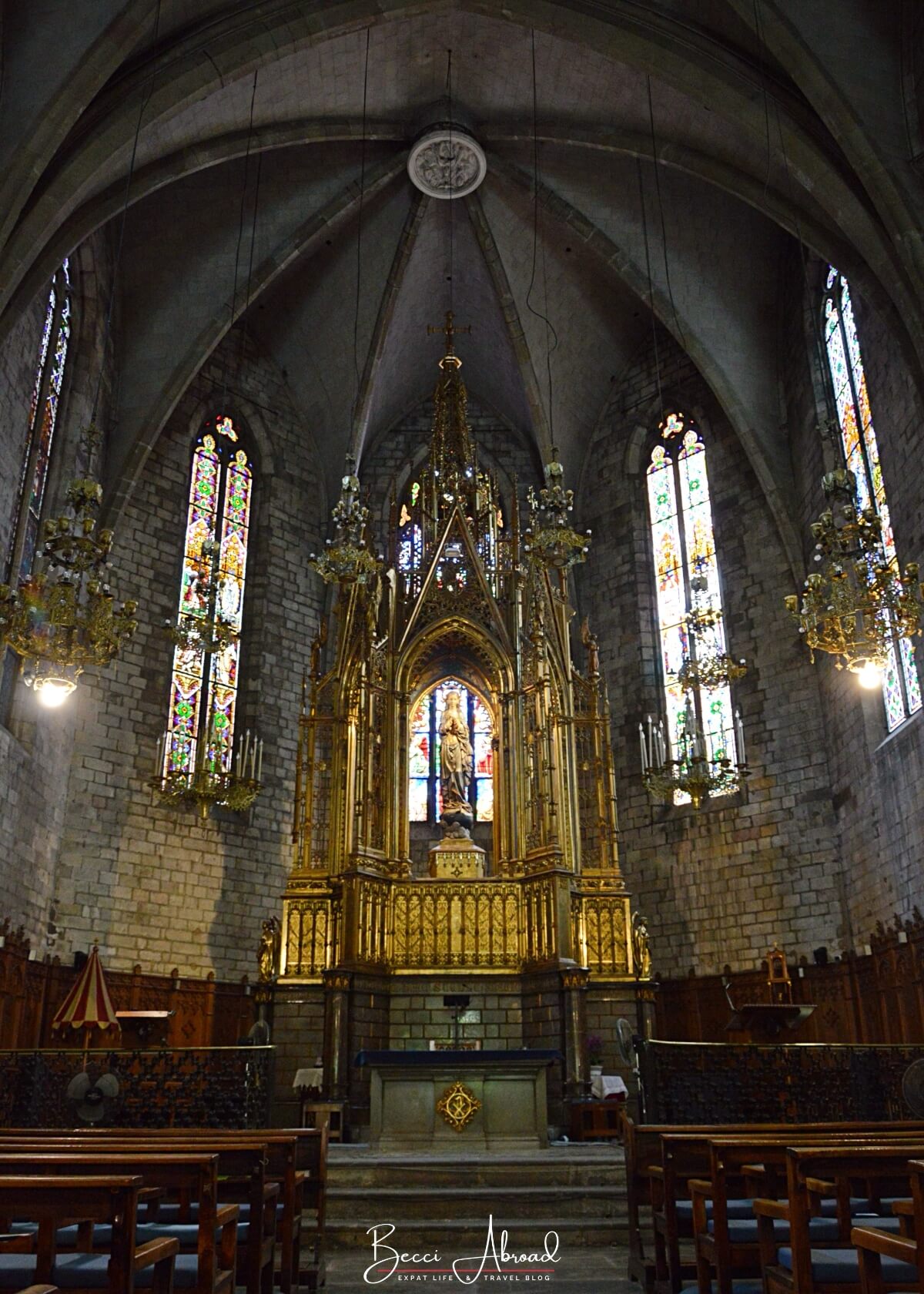
Discover the Architecture of Palau del Baro de Quadras
Palau del Baro de Quadras is a stunning architectural hidden gem in Barcelona that recently re-opened to the public!
This beautiful mansion is located on Avinguda Diagonal in the heart of Barcelona. The remarkable building was designed by the Catalan architect Josep Puig I Cadafalch.
The mansion was owned by the noble Spanish family of Baron de Quadras, who wished to renovate the mansion in Barcelona.
The Baron commissioned architect Puig I Cadafalch, who completely reimagined the residence between 1902 and 1903.
Tickets to visit this unique place in Barcelona are somewhat limited, so be sure to check the prices and availability for visits ahead of time.
Palau del Baro de Quadras offers another chance to admire some of the finest Catalan architecture.
Opening hours: Tours in English take place at 10 am. Check availability.
Location: Avinguda Diagonal 373, L’Eixample.
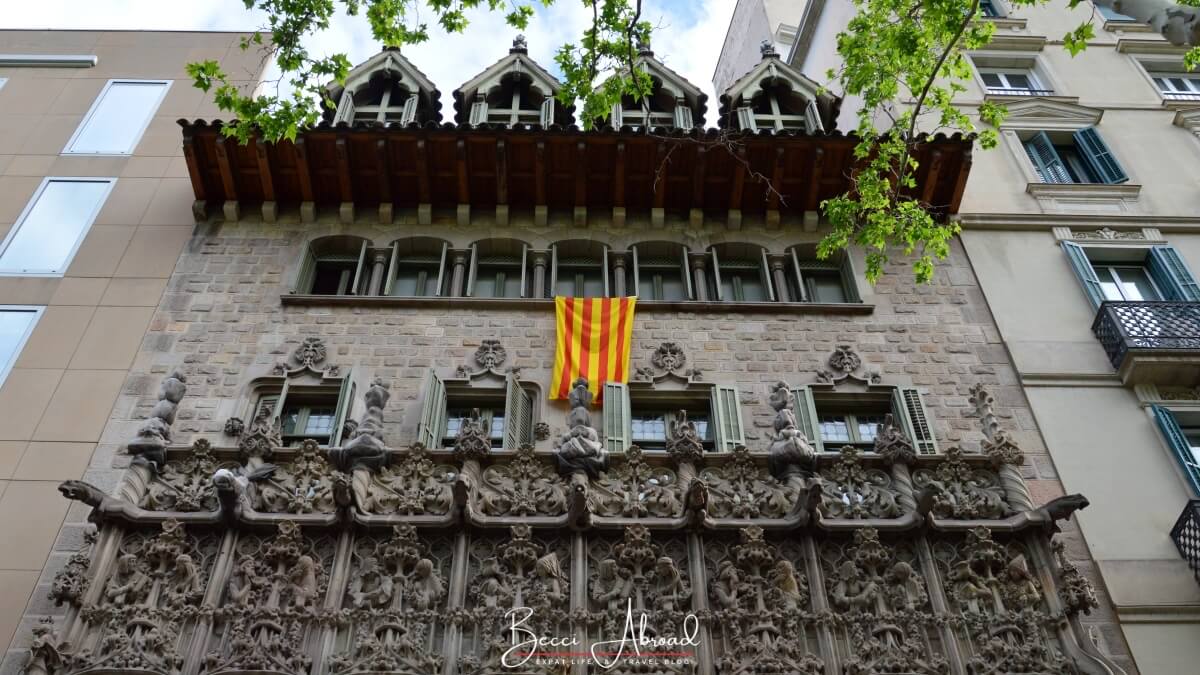
Explore more of the modernist art and architecture in Barcelona with a guided tour:
Hidden Gems in Barcelona’s Gothic Quarter
Barcelona’s Gothic Quarter, also known as Barri Gòtic in Catalan, is known for its narrow, winding medieval streets and historic buildings.
The Gothic Quarter is one of the most popular places to visit in Barcelona! However, beyond the bustling tourist attractions and needy street performers, you’ll find beautiful courtyards, less-known museums, and unique experiences to explore the history of Barcelona.
Let’s explore the off-the-beaten-path treasures and hidden gems in Barcelona’s oldest neighborhood!
Discover Unique Art at the Museu Frederic Marès
Museu Frederic Marès, translated as Frederic Marès Museum, is an art and sculpture museum and a true hidden gem in Barcelona’s Gothic Quarter.
This museum houses the extensive collection of Spanish sculptor Frederic Marès. The collection was donated by Frederic Marès to Barcelona in 1946.
The Museu Frederic Marès offers a unique glimpse into the artistic legacy of Barcelona, featuring sculptors from the 12th century to the modern era.
The museum’s tranquil courtyard is a perfect spot for a quiet break.
Opening hours:
- Tuesday – Saturday: 10 am to 7 pm
- Sunday: 11 am to 8 pm.
- Monday closed
Entrance fee: 4.20€
Entrance is free of charge on the first Sunday of the month and every Sunday afternoon from 3 pm to 8 pm.
Location: Plaça de Sant Iu 5, Gothic Quarter.
Enjoy a Break in a Medieval Courtyard, Jardins de Rubió i Lluch
Jardins de Rubió i Lluch, or the Rubio and Lluch Gardens, is a small hidden gem in Barcelona.
The gardens are located a stone’s throw from the popular La Rambla, a pedestrian street, and the famous La Boqueria Food Market
They are situated in the courtyard of the historic Hospital de la Santa Creu, which functioned as a hospital from 1401 until 1926.
Today, the surrounding buildings house the Biblioteca de Catalunya (Library of Catalonia), the Institut d’Estudis Catalans (Institute of Catalan Studies), and the Acadèmia de Medicina de Catalunya (Catalan Academy of Medicine).
You can access the gardens via the main entrance on Carrer Hospital 56 or through a discreet pathway on Plaça de la Gardunya.
The blend of medieval architecture and lush greenery makes this a peaceful retreat in the heart of Barcelona. Locals frequent the gardens for leisurely strolls with their dogs or playful afternoons with their children.
However, the tranquil atmosphere can also attract individuals experiencing homelessness, and during my visit on a hot summer day, certain areas of the patio had an unpleasant odor.
Opening hours: Daily: 8 am to 8 pm
Entrance fee: Free of charge.
Location: Carrer de l’Hospital 56, Ciutat Vella
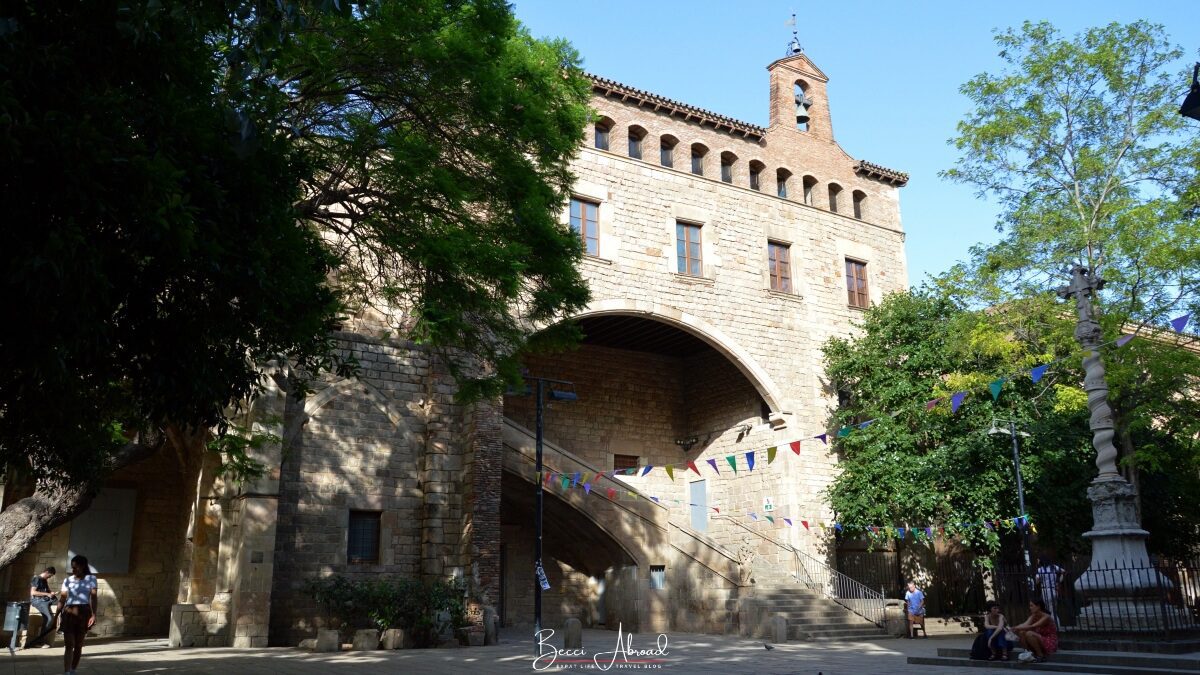
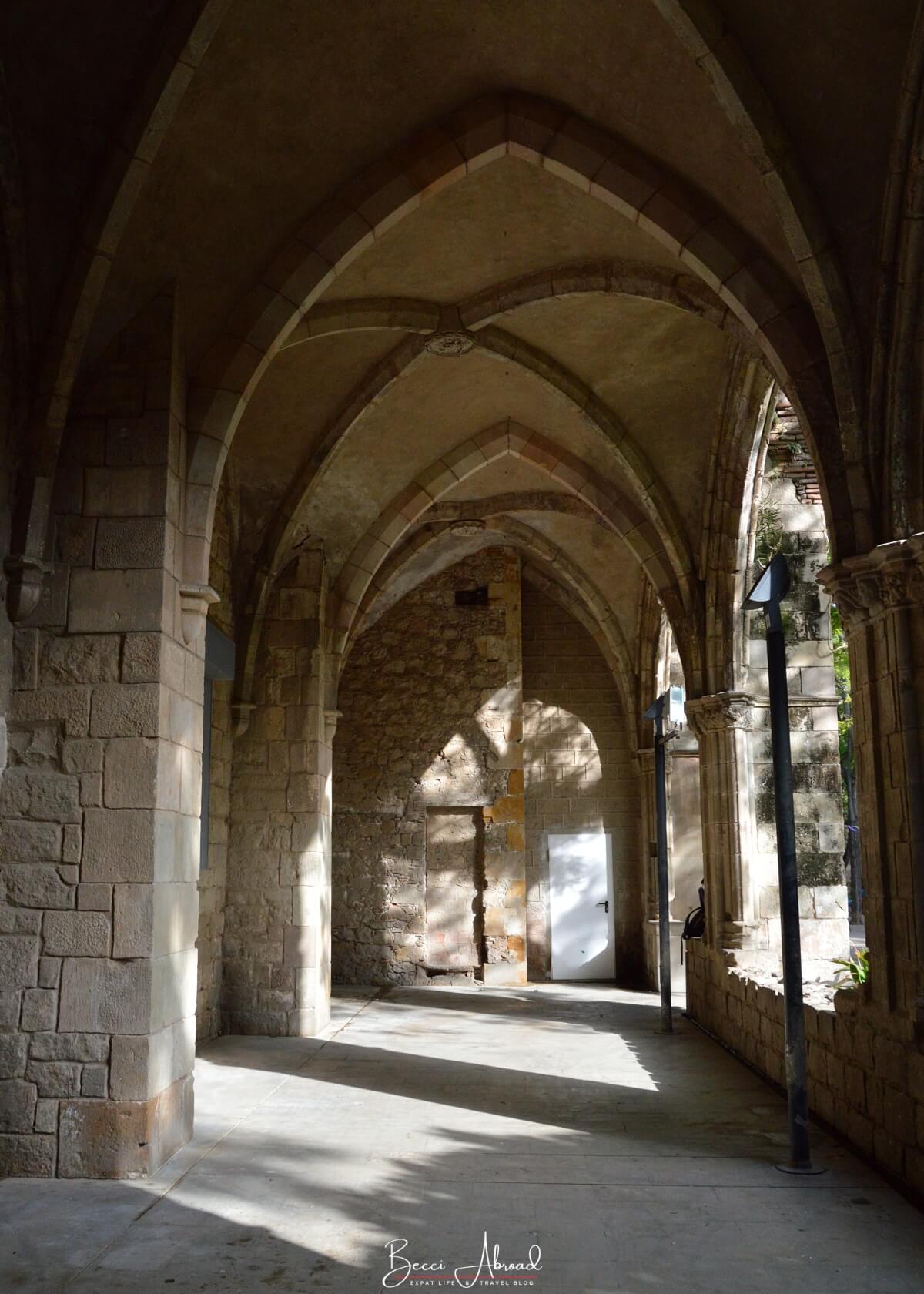
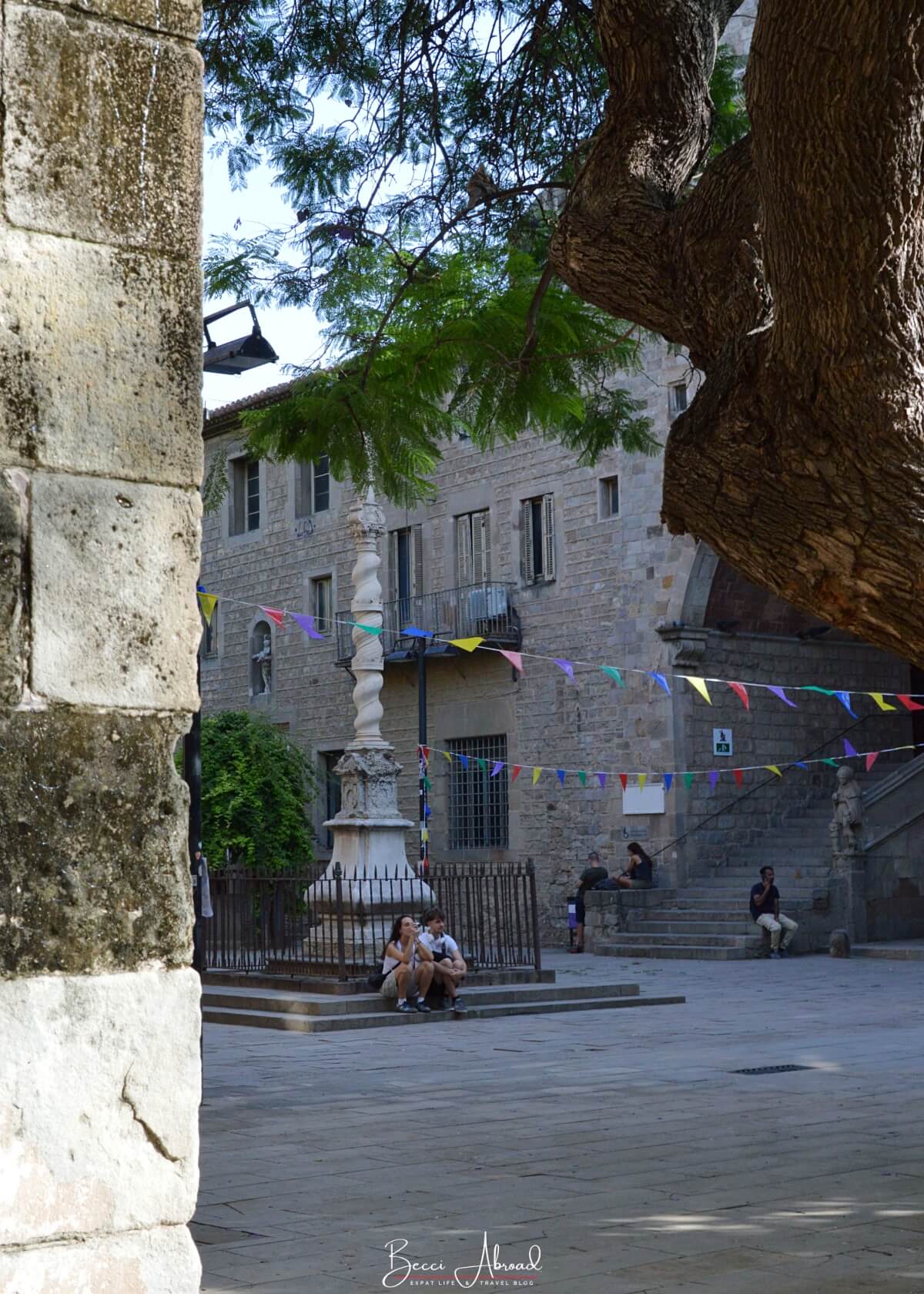
Learn more about the legends and hidden gems in Barcelona’s Gothic Quarter with a spooky evening walk:
Hidden Gems in Barcelona’s El Born & El Raval Districts
The neighborhoods of el Raval and el Born, together with the Gothic Quarter, form the old center of Barcelona. Both neighborhoods combine tradition and modernity with their narrow streets and historic buildings, modern street art, and lively atmosphere.
I find that El Raval has a messier and unclean atmosphere than El Born. El Born has become an extended part of the Gothic Quarter, and the part of El Born towards Ciutadella Park has its charm.
However, El Raval is the ideal spot if you are looking for vintage stores, distinctive bars, street art, and many other non-touristy things to do in Barcelona.
Explore the Greenhouse in Ciutadella Park
The Ciutadella Park is one of the best things to do in Barcelona; however, the park also hides one of Barcelona’s many hidden gems.
Inside the Park, you will find the newly opened greenhouse of Ciutadella Park, also known as Hivernacle del Parc de La Ciutadella in Catalan.
The greenhouse of Ciutadella Park consists of two closed greenhouses connected by an impressive iron-and-glass structure.
The greenhouse of Ciutadella Park was constructed by Josep Amargós i Samaranch for the 1888 Universal Exposition in Barcelona.
The greenhouse features a Modernista-style iron structure with beautifully decorated walls between the gigantic windows. Inside the greenhouse, you can explore a large selection of plants and flowers.
The greenhouse had been closed for an extended period. But it recently reopened to the public.
Opening hours: Daily 10 am to 8 pm
Entrance fee: Free of charge
Location: Ciutadella Park – Passeig de Picasso 7, Ciutat Vella

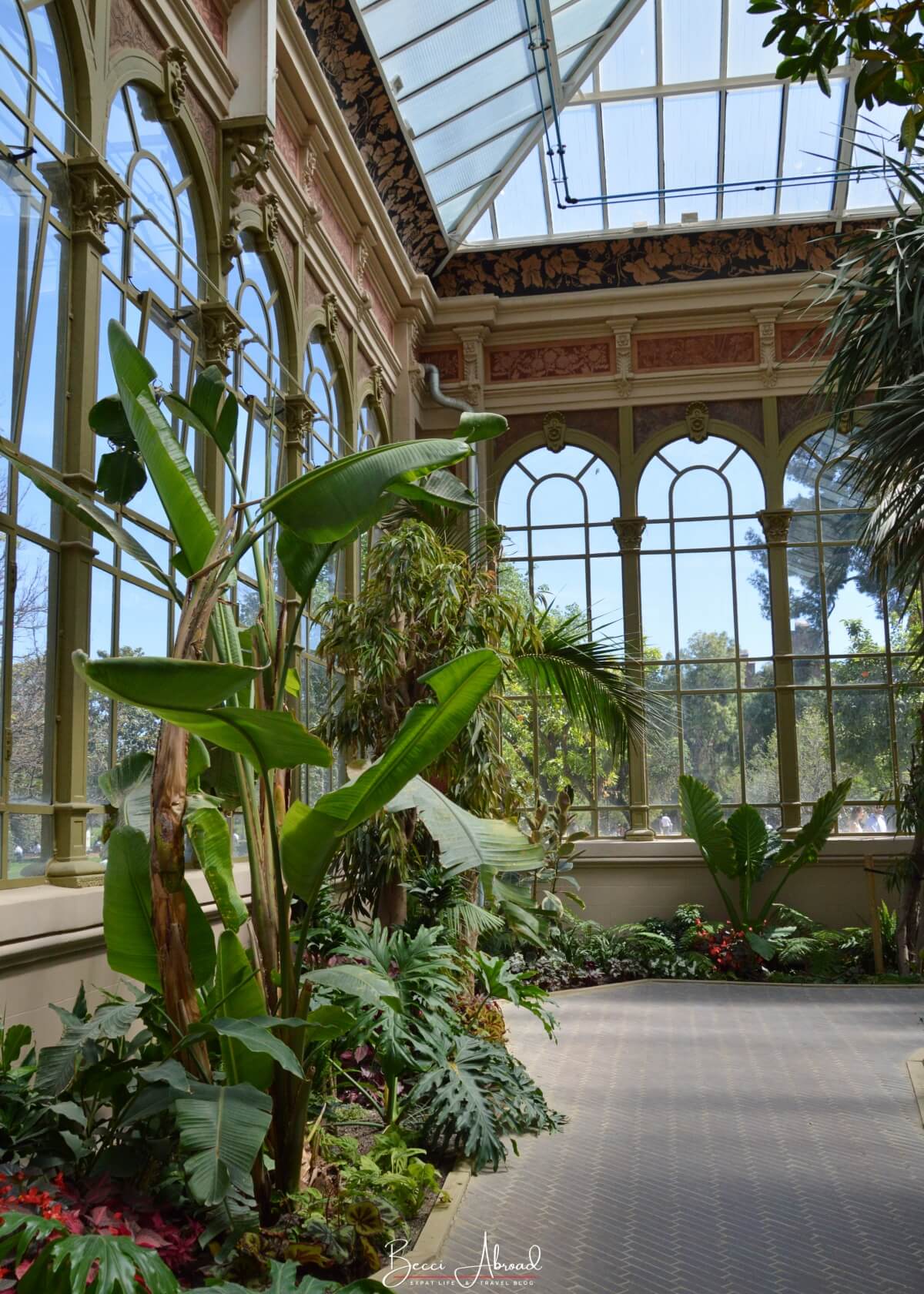

Shop Handcrafted Leather at Atelier Madre – Manuel Dreesmann
Tucked away in one of El Born’s charming narrow streets, you will find Atelier Madre by Manuel Dressmann, a unique leather shop offering exclusive handcrafted leather products.
Atelier Madre offers timeless leather products such as handbags, purses, laptop sleeves, belts, etc. All the products are designed in a minimalistic style that invites long-term use.
The leather atelier opened in 2021 and uses traditional handcrafted leather production methods. At Atelier Madre, they use leather from local tanneries in Igualdad, a charming village in the Catalan countryside. Igualdad is an area that is known as a trusted source for premium leather for many big fashion names.
The handcrafted and locally sourced products mean that you get a unique product to take home while also supporting local businesses!
What I really liked about this unique hidden gem in Barcelona is their philosophy of promoting buying less and using it for longer.
If you find a product you really like (or maybe regret not purchasing in Barcelona), Atelier Madre also offers international shipping from their website.
Atelier Madre is located a stone’s throw from the Ciutadella Park, making it a perfect stop to add in after you have explored Barcelona’s iconic park and its hidden gems.
Location: Atelier Madre – Manuel Dreesmann, Carrer del Rec 20, El Born
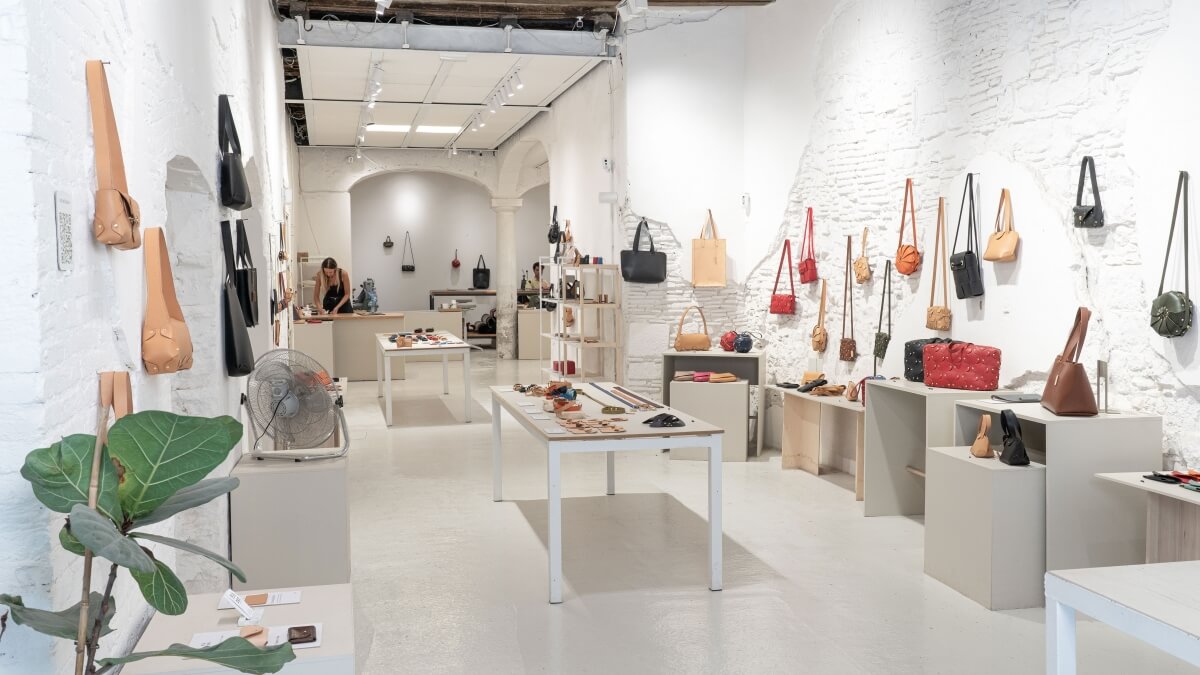


Visit a Gothic Convent and Civil Center, Centro Cívico Convent de Sant Agustí
A stone’s throw from Ciutadella Park in Barcelona’s El Born neighborhood, you will find a true hidden gem in Barcelona that most visitors miss!
Centro Cívico Convent de Sant Agustí, translated as the Civic Center of the Saint Augsto Convent, is an old Gothic-inspired convent dating back to the 14th century.
Today, the convent’s buildings are a cultural center with art exhibitions, concerts, and workshops for kids.
The old convent features a beautiful courtyard surrounded by buildings with gorgeous Gothic arches and decorations.
In one corner of the courtyard, you will find a small cafe to grab a coffee while you enjoy the breath of history in this gorgeous, hidden gem in Barcelona.
Opening hours:
- Monday – Friday: 9 am to 10 pm
- Saturday: 10 am – 2 pm & 4 pm – 9 pm.
- Closed all August
Entrance fee: Free of charge
Location: Carre del Comerç 36, Ciutat Vella
Enjoy World-Class Street Art at the Banksy Museum
The Banksy Museum in Barcelona is an art museum dedicated exclusively to the British street artist, Banksy.
Banksy is a world-renowned street artist and political activist who emerged in Bristol during the 1990s. Until today, his real name and identity are still unknown, and Banksy is the pseudonym he works under.
Banksy’s works are famous for having a critical and provocative touch to modern life, consumerism, and the state of the modern world.
The Banksy Museum in Barcelona is divided into 3 floors full of different pieces of Banksy’s street art from around the world, including newer pieces created during the war in Ukraine.
Each piece of art has its own description and history of the
Opening hours: Daily: 10 am to 8 pm
Entrance fee: Adults 14€ (children up to 6 years old are free of charge)
Location: Carrer de Trafalgar 34, Ciutat Vella

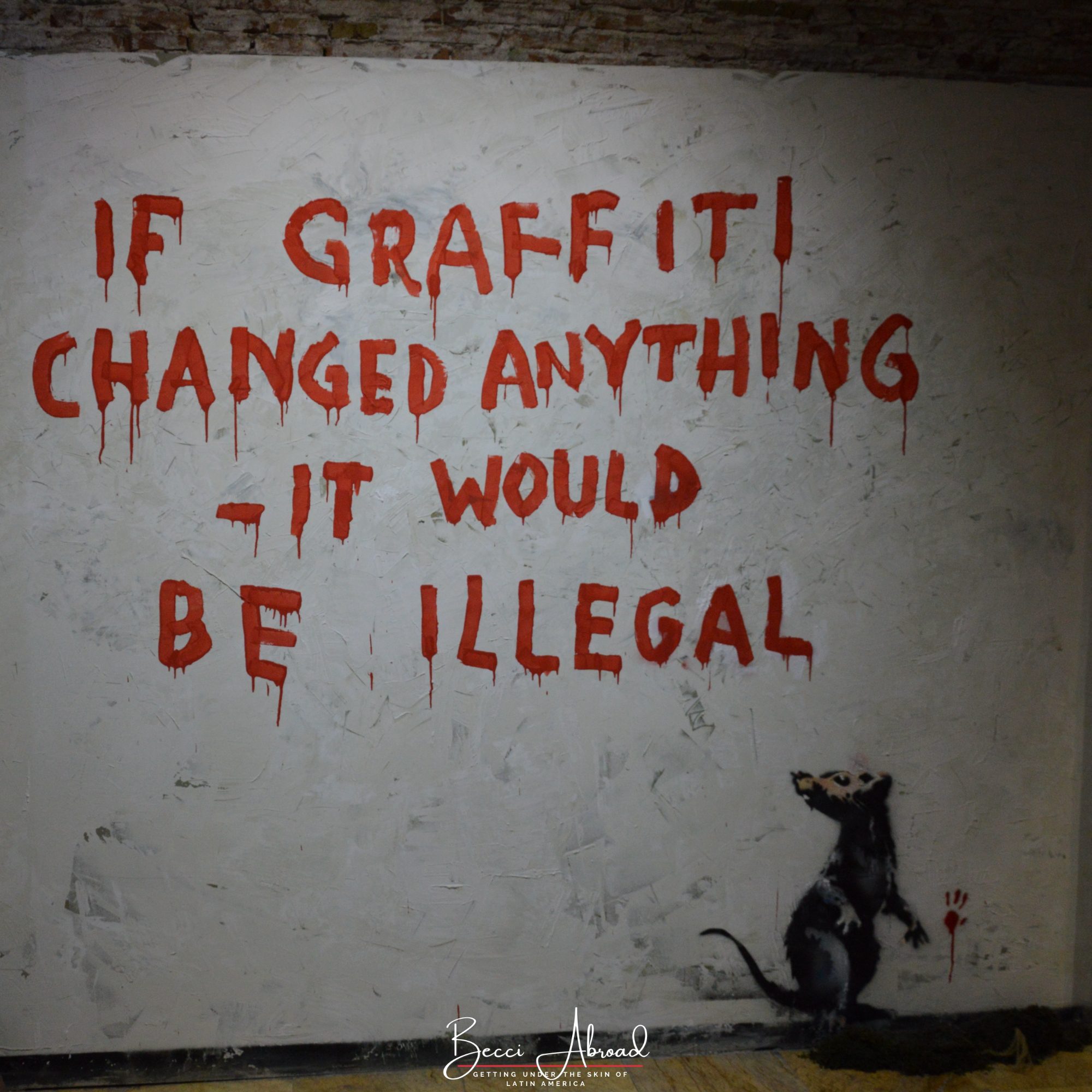
Go for Drinks in a Hidden Fairy Forest
The Fairy Forest, also known as El Bosc de les Fades in Catalan, is a unique magical bar in the heart of Barcelona.
The interior design of the Fairy Forest bar features depictions of fairies, elves, and trees, creating a mystical atmosphere that evokes a subtle sense of danger.
Within the bar is a small waterfall with running water and colorful lighting, with a small bridge leading into the enchanted forest.
The decorations are impressive, but the bar itself is not special – most people seem to visit just for photos.
The Fairy Forest bar is conveniently situated close to La Rambla Street and the Barceloneta area, yet often overlooked due to its location in a backyard near Barcelona’s Wax Museum.
Opening hours:
- Monday – Wednesday: 10:30 am to 12 pm
- Thursday – Sunday: 10:30 am to 1 am
Entrance fee: Entrance is free of charge – consumption is up to you.
Location: Passatge de la Banca 7, Ciutat Vella


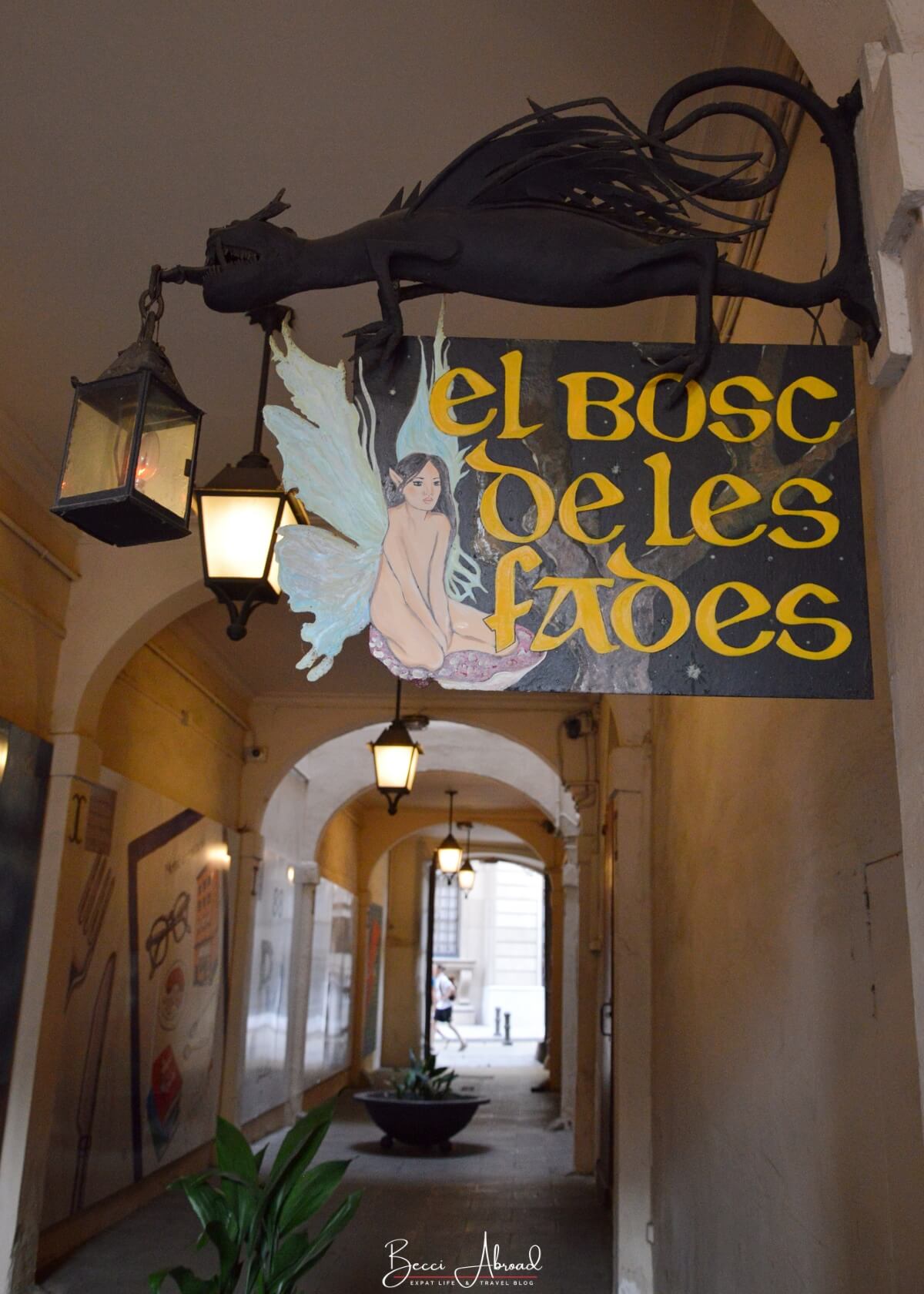
Street Art Walking Tour of El Raval
One of the best ways to explore the hidden gems of Barcelona’s El Raval neighborhood and enjoy the neighborhood’s vibrant culture is with a walking tour to explore the neighborhood’s street art scene.
El Raval has a bohemian feel to it, which attracts many street artists, and when you start looking, you will see street art everywhere
Street Art Barcelona offers an interesting walking tour of El Raval focused on street art and the development of the neighborhood.
If you are not up for joining a street art walking tour but still want to experience some of Barcelona’s vibrant street art, Parque de las Tres Chimeneas is an ideal spot for exploring street art in Barcelona.
Parque de las Tres Chimeneas is also famous for being one of Barcelona’s biggest skater hot spots.
If you are interested in exploring more street art in Barcelona, check out my self-guided walking tour of street art in Poblenou!
Location: The starting point is in front of Hotel Serhs del Port
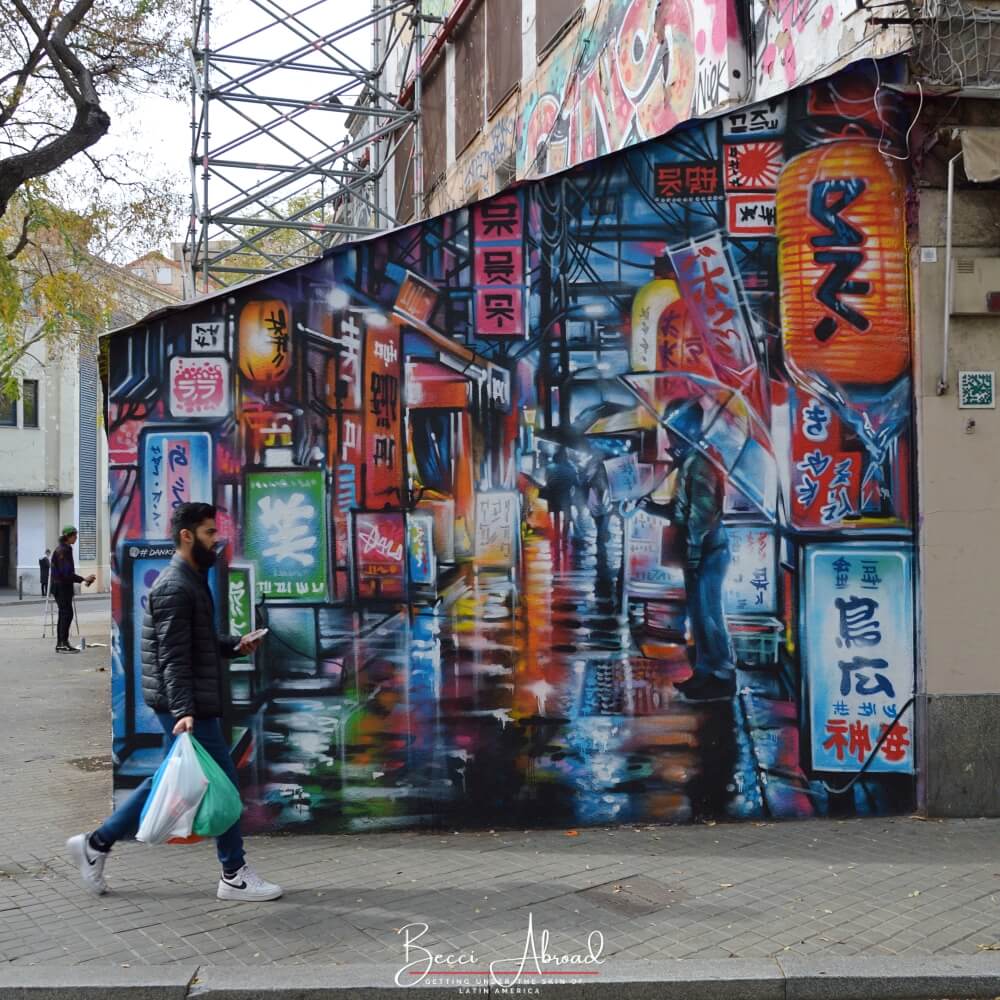

Uncover the Secrets of the Monastery of Sant Pau del Camp
Hidden away in the Raval district, you’ll find one of the most unique non-touristy things to do in Barcelona: Monasterio de Sant Pau del Camp.
Monasterio de Sant Pau del Camp, translated as Monastery of Sant Pau del Camp, is one of the oldest buildings in Barcelona.
This Romanesque monastery dates back to the 10th century and offers a tranquil oasis in the middle of the busy Raval neighborhood.
The robust brick walls of the monastery have stood against the change for times, and stepping into the Monastery of San Pau del Camp is like stepping back in time.
You can either visit the Monastery of San Pau del Camp on your own or sign up for an extended guided tour of the Raval neighborhood, including a stop at San Pau del Camp.
Opening hours: Daily: 10 am to 6 pm
Entrance fee: 6€ (children below 12 years old are free)
Location: Carrer de Sant Pau 99, El Raval
Visit Barcelona’s Maritime Museum
Barcelona’s Maritime Museum, or Museu Marítim de Barcelona in Catalan, is an often overlooked tourist attraction in Barcelona, making it the perfect spot for exploring Barcelona’s off-the-beaten-path attractions.
The Maritime Museum is located in Barcelona’s old Gothic shipyards and offers a unique insight into Barcelona’s maritime past.
The museum’s centerpiece is a full-scale replica of the Royal Galley, an impressive ship that participated in the Battle of Lepanto in 1571. Barcelona’s Maritime Museum also houses a collection of historic vessels, navigational instruments, and maritime artifacts.
In the courtyard of the Museu Marítim, you will find another hidden gem of Barcelona, the Maritim Museum Cafe and Restaurant, Norai Raval, located beautifully in the museum’s garden.
So, even if you’re not up for learning about ships and seafaring, do yourself the favor of visiting this secret garden in Barcelona.
Opening hours: Daily: 10 am to 8 pm
Entrance fee: 10 €
Every Sunday after 3 pm, the entrance to Barcelona’s Maritim Museum is free of charge.
Location: Avenida de les Drassanes s/n, Ciutat Vella
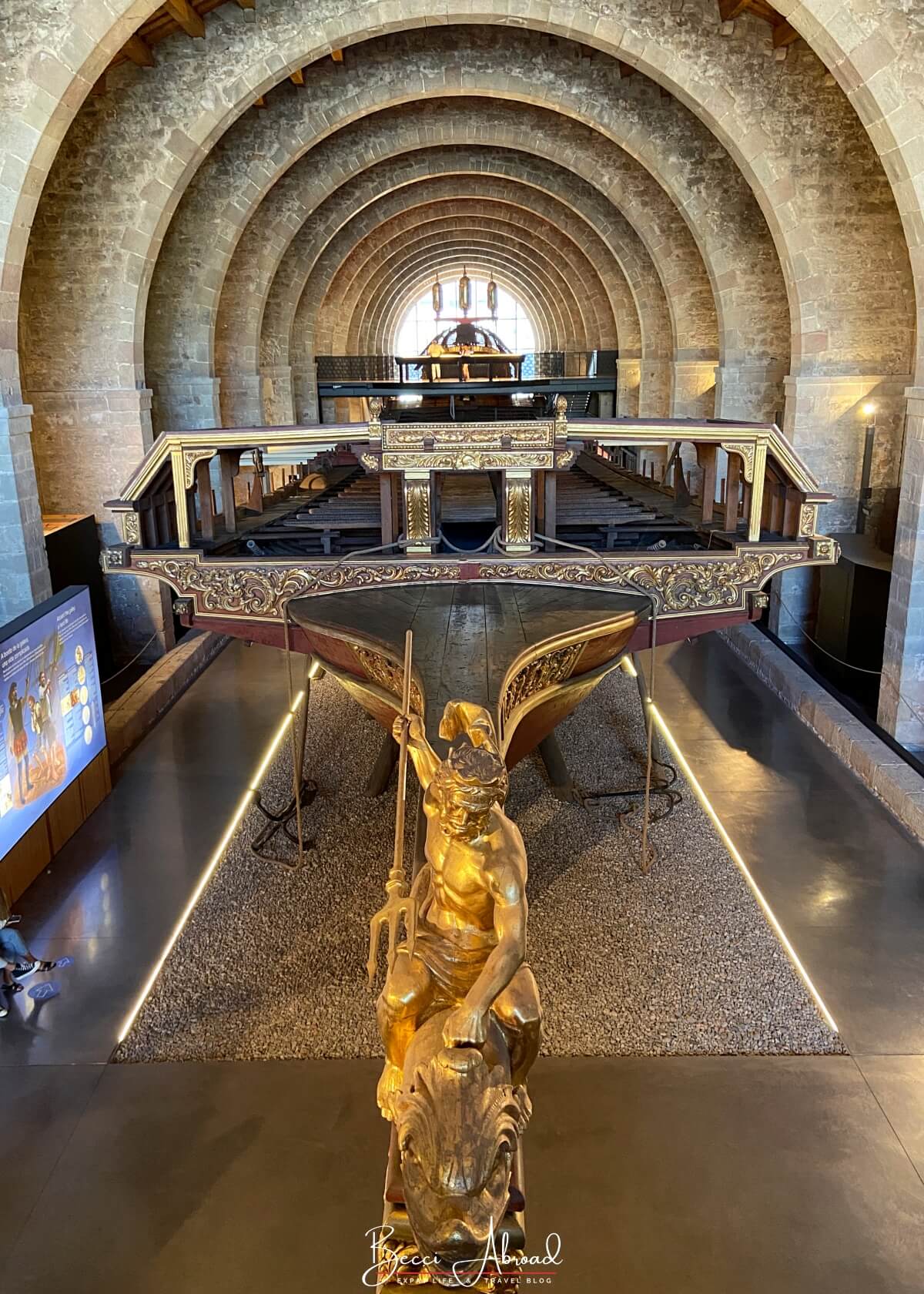
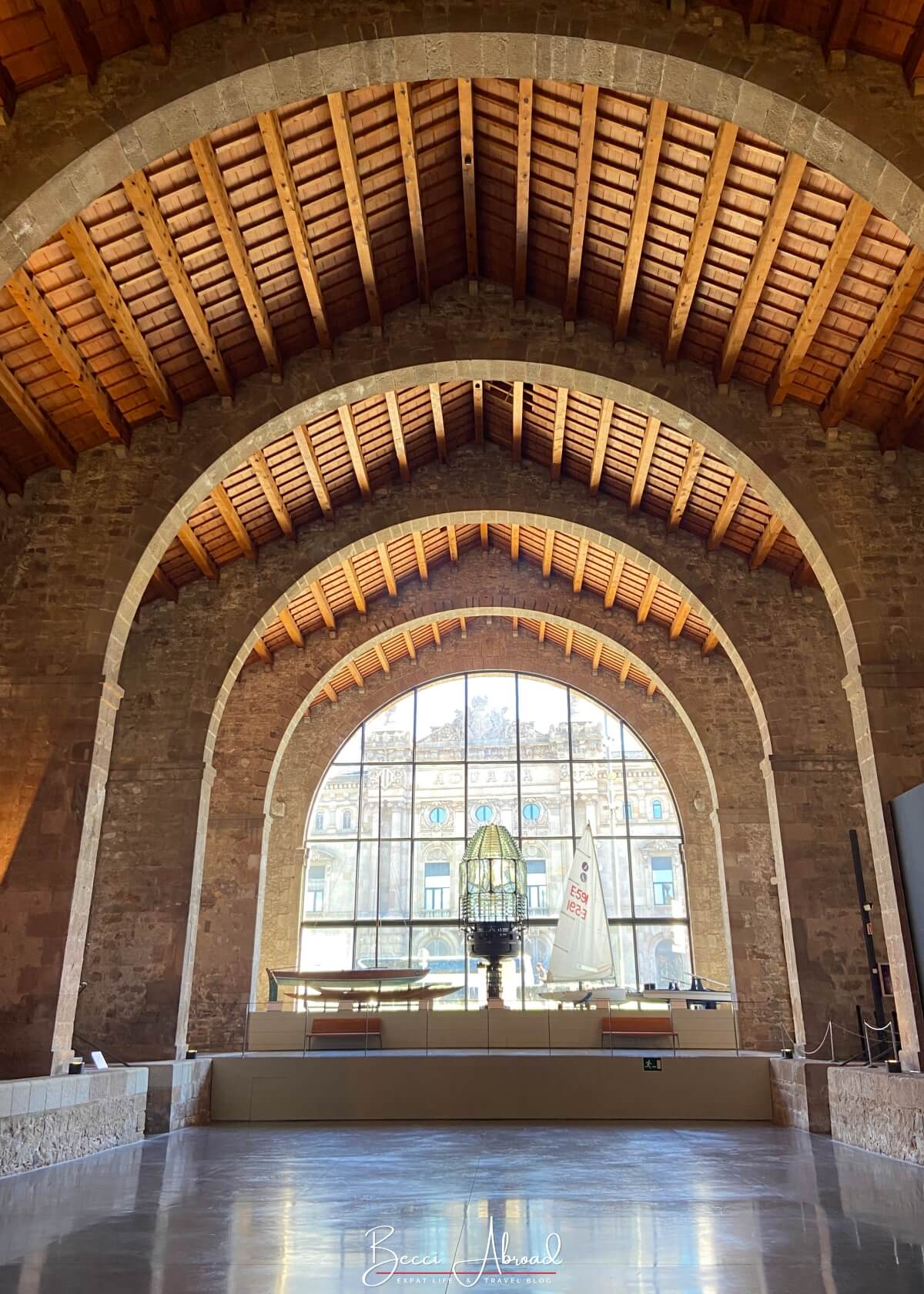
Hidden Gems in Barcelona Around Montjuic
The Montjuïc Hill is a historic hill located centrally in Barcelona, overlooking the city and the Mediterranean Sea.
Montjuïc Hill is known for its lush green spaces, historic landmarks such as the picturesque Montjuïc Castle, and panoramic views. But Montjuïc Hill is also a perfect spot to visit if you are looking for hidden gems and non-touristy things to do in Barcelona.
At Montjuïc Hill, you can find everything from beautifully landscaped gardens to museums to impressive swimming pools on the hillside, all with impressive panoramic views over Barcelona.
Check out Barcelona’s Cactus Garden, Jardins de Mossen Costa i Llobera
Jardins de Mossen Costa i Llobera, translated as the Mossen Costa i Llobera’s Garden, is one of the biggest botanical gardens in Europe, focusing on cacti and succulent plants.
The Mossèn Costa i Llobera Cactus Garden is situated on the southeast slope of Montjuïc Hill, providing a stunning panoramic view of Barcelona’s coastline and port.
The gardens showcase an array of plant and tree species from various regions like the desert, sub-desert, tropical areas, and highlands. Additionally, there is an extensive collection of cacti, comprising around 800 different types from diverse continents and countries.
Barcelona’s Cactus Gardens were constructed in 1970 and named after the Majorca poet Miquel Costa i Llobera. Costa i Llobera was a prominent Catalan writer who primarily wrote in the Catalan language.
The Mossèn Costa i Llobera Cactus Garden spans about 6 hectares on Montjuïc Hill. However, Barcelona’s Cactus Garden is still among the least-visited gardens and one of the best hidden gems in Barcelona.
Opening hours:
- November to March
Daily: 10 am – 7 pm - April to October
Daily: 10 am – 9 pm
Entrance fee: Free of charge
Location: Carretera Miramar 38, Sants-Montjuïc
Swim at the Montjuïc Olympic Pool
Montjuïc’s Olympic Pool, also known as Piscina Municipal de Montjuïc in Catalan, is a large public swimming pool on Montjuïc Hill. The Montjuïc swimming pool is the perfect hidden gem in Barcelona if you visit during the summer.
The location of the swimming pools on the hillside of Montjuïc creates a stunning view of Barcelona’s skyline with the Tibidabo, Sagrada Familia, and Torre Glòries.
The swimming pools were first built in 1929 but refurbished for the 1992 Summer Olympic Games held in Barcelona.
The Montjuïc pools are only open during the summer months from the beginning of July to the start of September.
The Montjuïc swimming pools are a popular place for locals to escape the heat of the Barcelona summer while enjoying the beautiful views of the city.
Opening hours: Only open from July to September:
- Monday – Thursday: 11 am – 7 pm
- Friday – Sunday: 11 am – 9.30 pm
Entrance fee: Adults are 7.55€ for a day pass. Children under 15 years old are 5.23 €.
Location: Avinguda Miramar 31, Sants-Montjuïc
Admire world-class art at the Joan Miró Museum
Fundació Joan Miró is a Modern Art Museum located on the top of Montjuïc Hill, showcasing works of the famous Catalan painter, Joan Miró.
Joan Miró, a painter and sculptor from Barcelona, gained international recognition for his surrealistic and vibrant artworks.
Fundació Joan Miró, also known as the Joan Miró Foundation in English, features the largest collection of Miro’s art in the world.
Despite its impressive collection of world-class art, the museum is often overlooked due to its remote location on top of Montjuïc Hill.
The museum is located inside a beautiful park on the top of Montjuïc Hill, called Parc de Montjuïc. Both the park and the museum offer amazing views of Barcelona.
To get the most out of your visit, the Fundació Joan Miró museum offers a free audio guide to guide you through this impressive hidden gem of modern Catalan art.
Opening hours:
- Tuesday – Saturday: 10 am – 8 pm
- Sunday: 10 am – 7 pm
- Monday closed.
Entrance fee: Adults are 15 €. Children under 15 years old are free of charge.
Location: Parc de Montjuïc – Avinguda de Miramar 1, Sants-Montjuïc
Learn about the Spanish Civil War at Air-Raid Shelter Refugi 307
Refuge 307 is a lesser-known hidden air-raid shelter from the Spanish Civil War and the perfect hidden gem in Barcelona for history lovers.
Refugi 307, as the shelter is called in Catalan, was part of the Passive Defense Board established in Barcelona during the 1937 bombing raids by Franco’s army.
The name of the shelter, Refuge 307, refers to the fact that the shelter was the number 307 of the tunnels created in Barcelona during the Spanish Civil War. Refuge 307 is located at the foot of Montjuïc.
The air-raid shelter is a part of the extensive network of underground tunnels created by locals during the Spanish Civil War and provides insight into the lives of those who sought refuge here.
It is only possible to visit Refugi 307 through a guided tour. Tours are only available on Sundays. Tours in English take place at 10:30 am, and tours in Spanish take place at 11:30 am.
The air-raid shelter offers a glimpse into the history of Barcelona during the Spanish Civil War and is a sharp contrast to the city’s usual sunny and lively atmosphere.
Refugi 307 is one of the best-kept hidden gems in Barcelona!
Opening hours: Sundays, only through guided tours. Tours in English at 10:30 am.
Location: Nou de la Rambla 175, Sants-Montjuïc
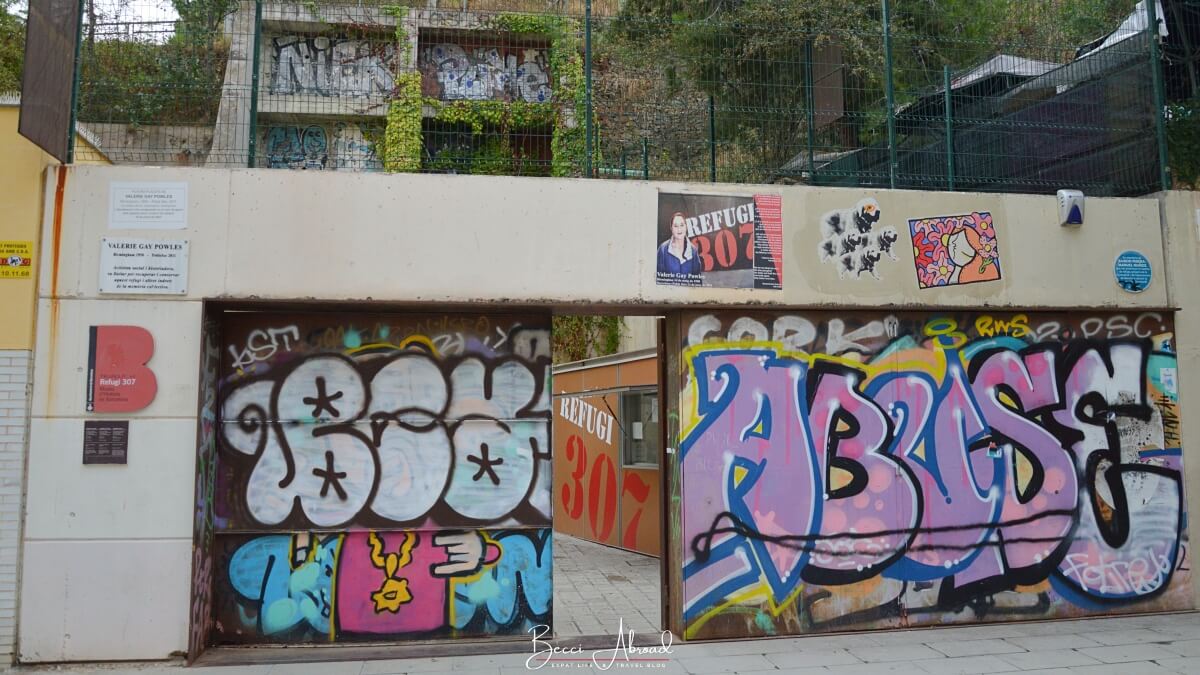
Enjoy the Views from the Greek Theatre and its Garden
Inside the public park, Parc de Montjuïc, on the hillside of Montjuïc Hill, you will find one of Barcelona’s most unique places: an open-air amphitheater in classic Greek style.
The theater wasn’t built by an Ancient Greek civilization. The Greek Theater was built for the 1929 International Exposition in Barcelona.
The Greek Theater is surrounded by a beautiful rose garden known as Jardins del Teatre Grec, translated as the Gardens of the Greek Theater. The gardens were also created for the 1929 International Exposition.
During the summer months (June through August), the Greek Theatre is the center of Barcelona’s biggest performing arts summer festival, called the Grec Festival.
The Greek Theater is located right next to the Art Museum, Fundació Joan Miró, making it a perfect spot to explore on the same day.
If you are looking for a hidden gem in Barcelona, away from the crowds, you should consider a visit to the Greek Theater on Montjuïc Hill!
Opening hours:
- November to March
Daily: 10 am – 7 pm - April to October
Daily: 10 am to 9 pm
Entrance fee: Free of charge
Location: Passeig de Santa Madrona 36, Sants-Montjuïc
Visit Barcelona’s Botanical Garden
Barcelona’s Botanical Garden is a hidden gem on Montjuïc Hill, often overlooked by visitors.
El Jardí Botànic de Barcelona as the Botanical Garden is called in Catalan, is home to a diverse collection of plants from around the world.
The garden is beautifully designed, with winding paths that lead you through different zones. Each zone represents a different region of the world, from the Mediterranean to Australia.
The Botanical Garden is a haven for nature lovers and a great non-touristy thing to do in Barcelona to escape from the city’s busy streets.
Opening hours:
- November to January
Daily: 10 am to 5 pm - February to March
Daily: 10 am to 6 pm - April to May
Daily: 10 am to 7 pm - June to August
Daily: 10 am to 8 pm - September to October
Daily: 10 am to 7 pm
Every first Sunday of the month and every Sunday after 3 pm, the entrance to Barcelona’s Botanic Garden is free of charge.
Location: Carrer Dr. Font i Quer 2, Sants-Montjuïc
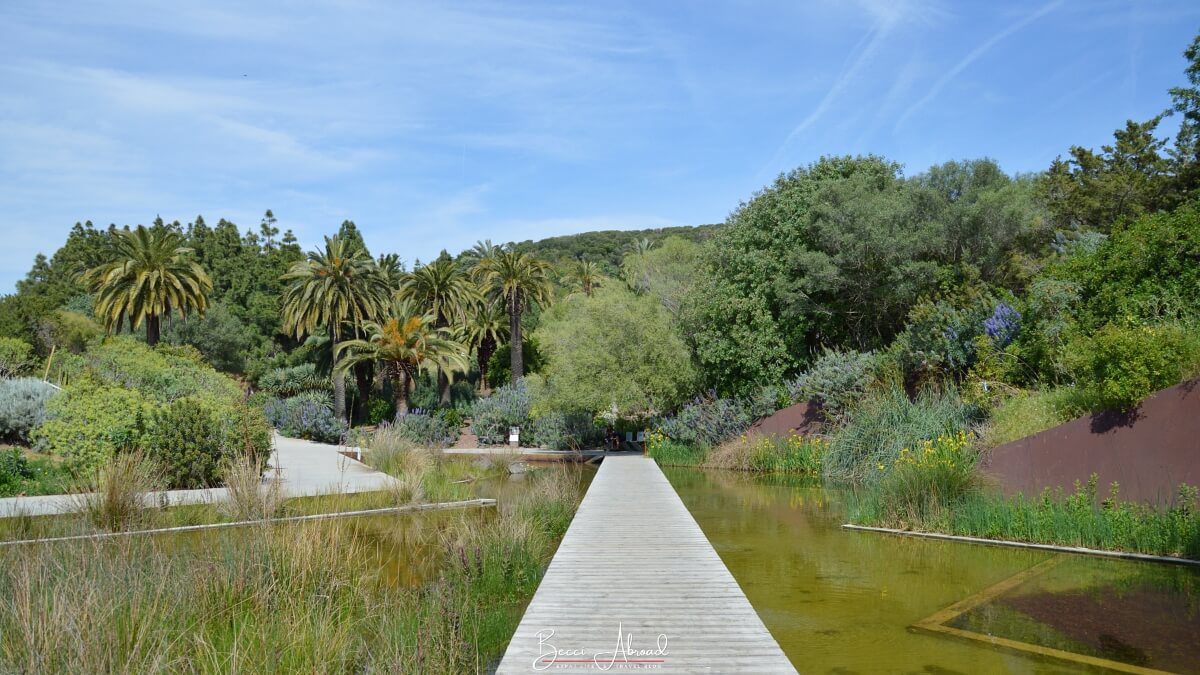
Hidden Gems in Barcelona Around Tibidabo Mountain
The Tibidabo Mountain in Barcelona is the most famous of its Tibidabo Amusement Park and the church, Temple Expiatori del Sagrat Cor, which is visible from almost everywhere in Barcelona.
In the area around Tibidabo Mountain, you can find many secret spots and hidden gems in Barcelona!
From one of my absolute favorite viewpoints to a secret garden and impressive Gaudí architecture.
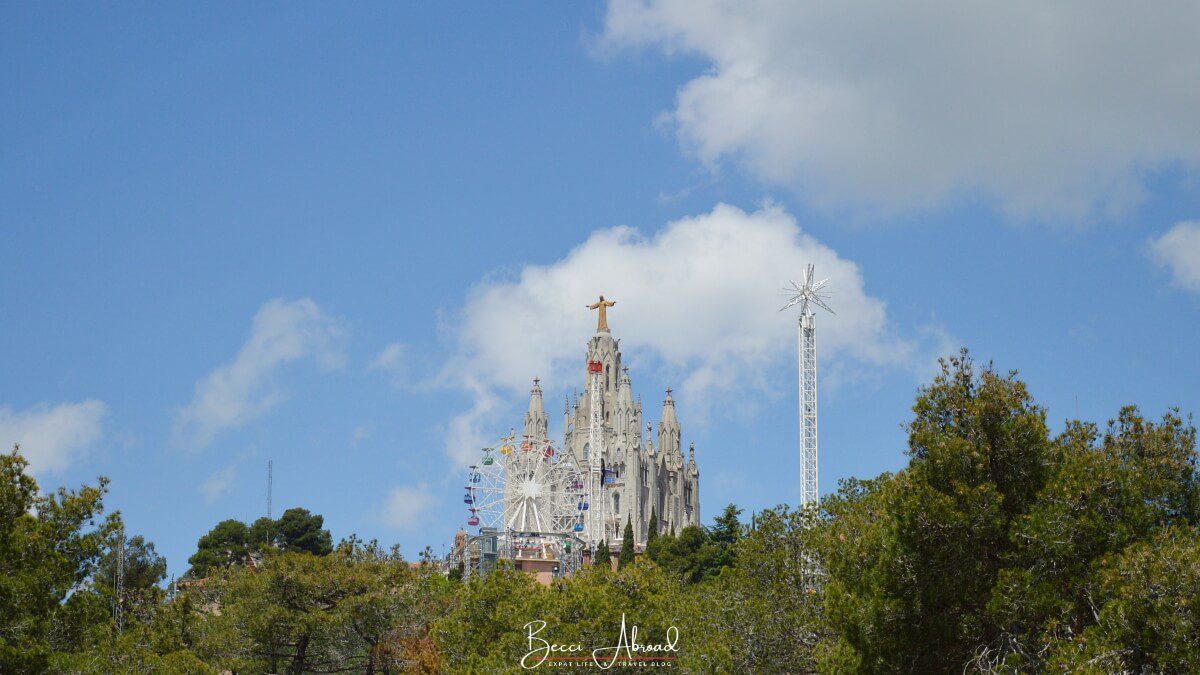
Enjoy the Best Views of Barcelona from Observatori Fabra
The Fabra Observatory, or Observatori Fabra in Catalan, is one of my favorite hidden gems in Barcelona!
The Fabra Observatory is an astronomical observatory, dating back to 1904, and is one of the oldest still operating observatories in the world.
The observatory on Tibidabo Mountain not only conducts interesting astrological work, but its position on the hillside also provides one of the best panoramic views of Barcelona.
The Fabra Observatory has been dedicated to researching meteorology, seismology, and astronomy for over a hundred years. The observatory’s main goal is to gather and analyze data ranging from seismic activity to images of minor asteroids.
The Fabra Observatory is one of the most unique places to visit in Barcelona. However, the Observatory has limited opening hours, making it a bit challenging to visit.
The Fabra Observatory is open on Sundays and public holidays from 11 am to 1 pm. Visitors can enjoy the observation deck with views of Barcelona for free or opt for a guided tour in Catalan of the observatory’s installations.
From October to May, you can also take a guided tour of the Fabra Observatory on Friday and Saturday nights. On Saturday nights, the guided tours are also offered in English.
The night visit costs 30 euros per person, and reservations can be made at Sternalia.
Dinner Events at the Fabra Observatory
During the summer months from May to October, special dinner events are hosted by the Fabra Observatory.
These events are known as Dinner with the Stars or in Spanish Cena con Estrellas, and offer you the unique romantic experience of dining with Barcelona at your feet!
For the Dinner with the Stars events, you reserve a menu beforehand at varying price points.
Apart from the dinner, a visit to the observatory is also included in the price of the Dinner with the Stars events.
You can get to Observatory Fabra either by taking the local bus 111, by hiking up the trails of Tibidado Mountain, or by taking a taxi.
If you are going at night, I strongly recommend that you don’t try to hike up as the hike up to the observatory is a bit of an adventure in itself through dirt trails without any lighting.
Opening hours: Sundays and Spanish public holidays: 11 am – 1 pm.
Entrance fee:
- Day-time visits: 3 € (in cash, no reservation is needed)
- Night visits: 30 €
- Dinner with the Stars: starting at 81,50€
Visiting the observation deck is free of charge.
Location: Carretera de l’Observatori Fabra 27, Sarrià-Sant Gervasi
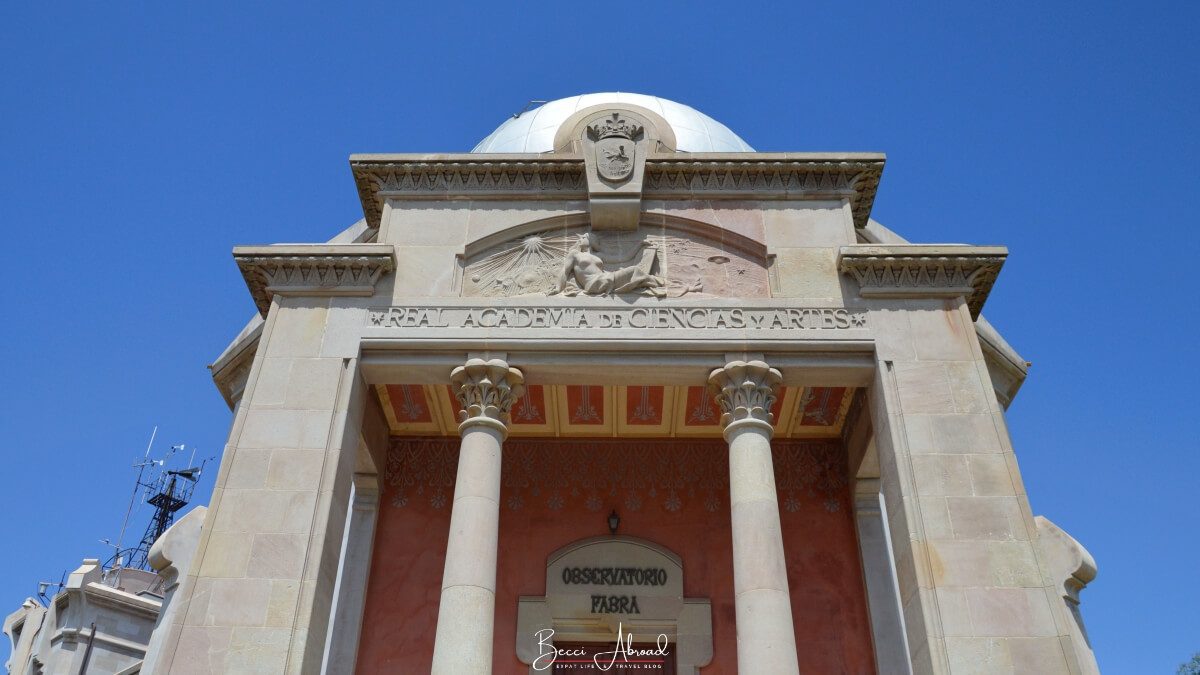

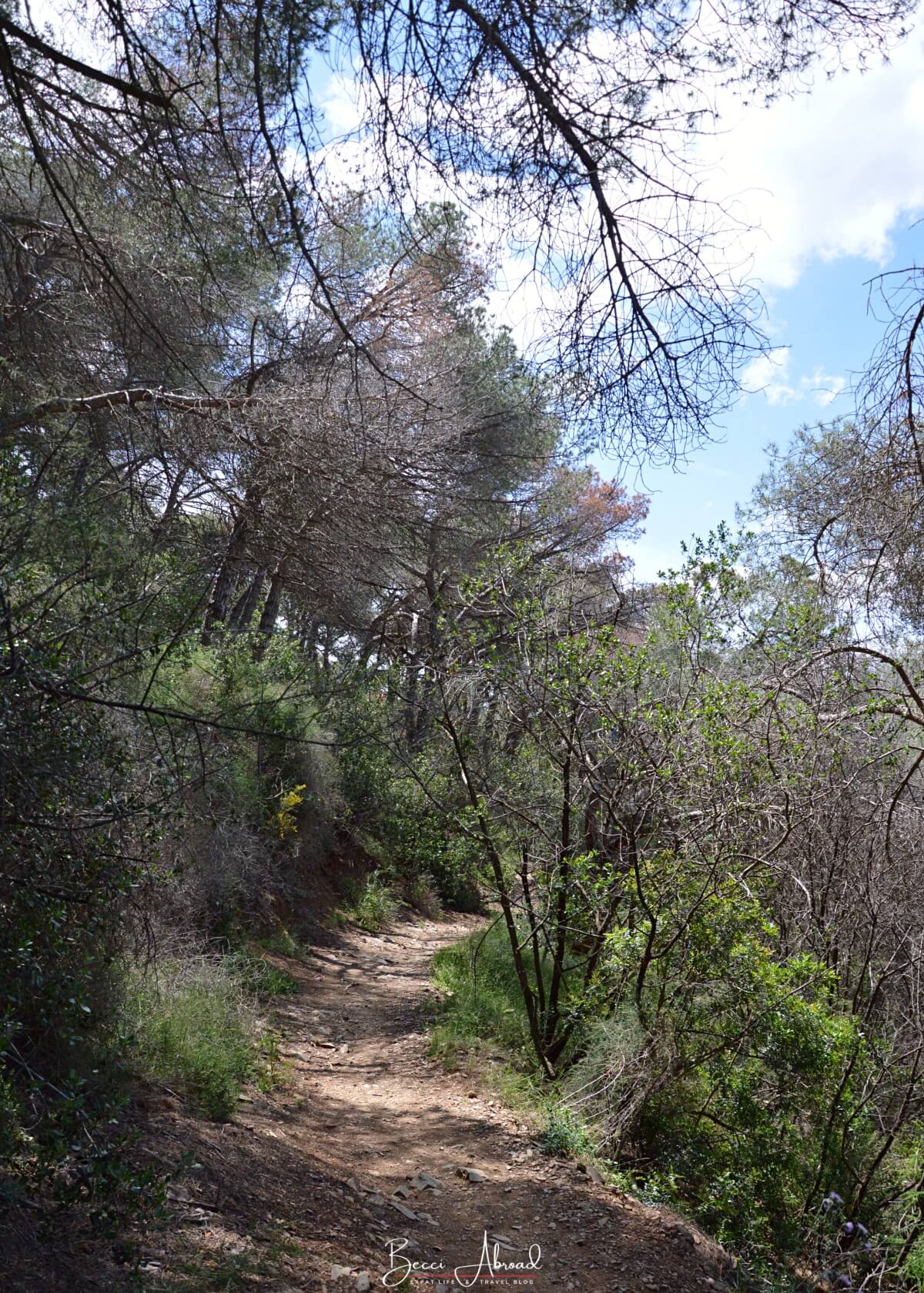
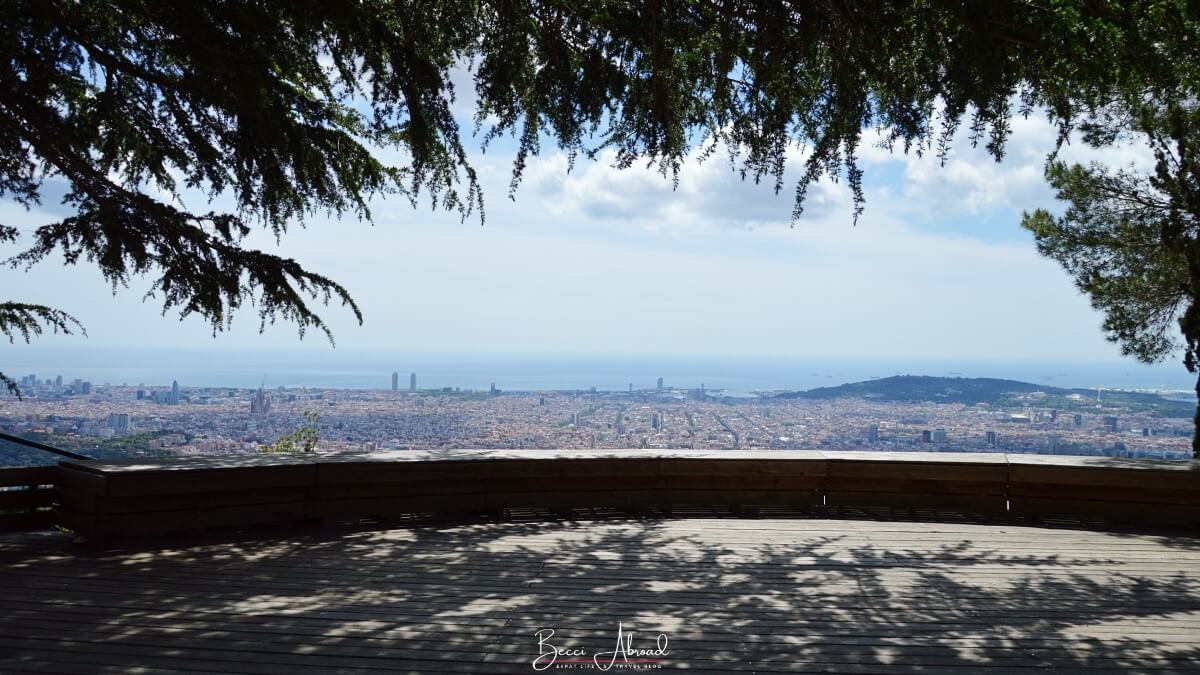
Visit Gaudí’s Hidden Gem in Barcelona, Torre Bellesguard
Torre Bellesguard is a lesser-known work by the renowned Catalan architect Antoni Gaudí (the architect who, among others, designed Sagrada Familia), making it a perfect hidden gem in Barcelona.
Torre Belleguard is a modernist mansion created with inspiration from a medieval castle. To step into Torre Belleguard is like stepping into a magical blend of Gothic and modernist styles
The building is located in the Sarrià-Sant Gervasi district of Barcelona, just below the Tibidabo Mountain.
The name “Bellesguard” in Catalan translates to “beautiful view”, which perfectly describes the stunning views over the city and the surrounding mountains that you can enjoy from the building’s tower.
Visiting Torre Bellesguard provides a distinct view of Gaudí’s work, separate from the masses at his better-known buildings and landmarks in the city center, such as Sagrada Familia and Park Güell.
Opening hours:
- Tuesday – Sunday: 10 am – 3 pm
- Monday closed
Entrance fee: 12 €
Location: Carrer de Bellesguard, 20, Sarrià-Sant Gervasi
Discover the Secret Garden, Jardins de la Tamarita
Jardins de la Tamarita, translated as the Tamarita’s Garden, is a beautiful secret garden located in the middle of Barcelona’s busy Sarrià-Sant Gervasi neighborhood.
Jardins de la Tamarita is a true oasis of calm, filled with lush greenery, beautiful sculptures, and charming pathways.
This hidden gem in Barcelona used to be the private garden of a mansion. In the 17th century, the Tamarita’s Garden was created as part of the estate of the Craywinckel family. The Craywinckel was a wealthy Belgian family who moved to Barcelona.
At the beginning of the 20th century, the property was acquired by Alfredo Mata, an important cotton vendor at the time. It was Mata’s nephew who got the gardens designed the way we can experience them today.
After the Spanish Civil War, the Tamarita’s Garden was left almost abandoned. But in 1993, the mansion and its garden became public property, and a major restoration project began. Today, Jardins de la Tamarita is a public space that you can freely visit.
If you’re on your way to the bus stop to the Tibidabo bus, you’ll come by the entrance to Jardins de La Tamarita. My recommendation is to take a moment to check out this peaceful oasis in the middle of Barcelona.
When I visited Jardins de la Tamarita on a Friday afternoon, there was nobody – except a very talkative, cute black. This secret garden in Barcelona is the ideal spot for escaping the city and enjoying a bit of tranquility.
Opening hours:
- April to October
Daily: 10 am – 9 pm - November to March
Daily: 10 am – 7 pm
Entrance fee: Free of charge.
Location: Passeig Sant Gervasi 47-49, Sarrià-Sant Gervasi
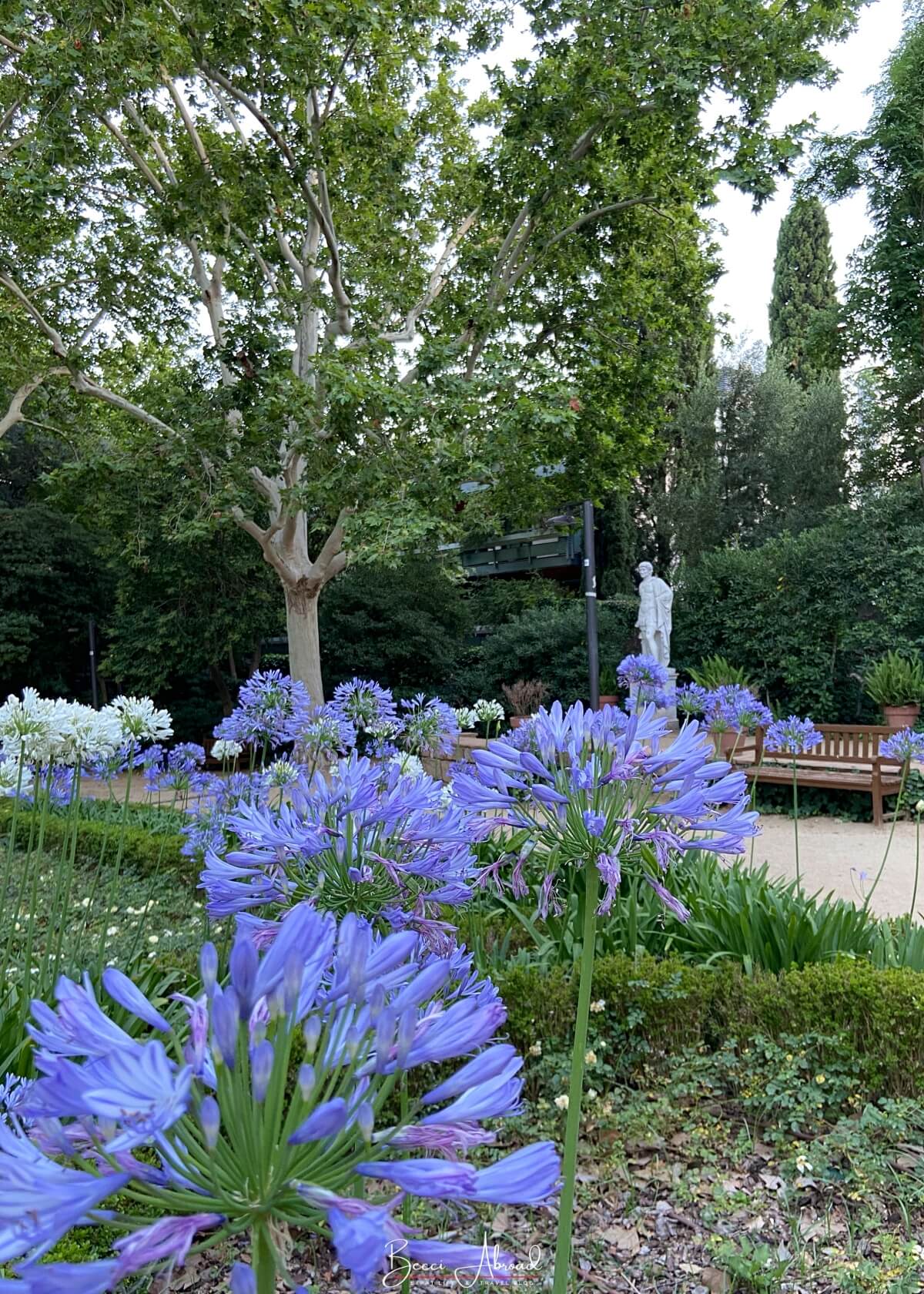
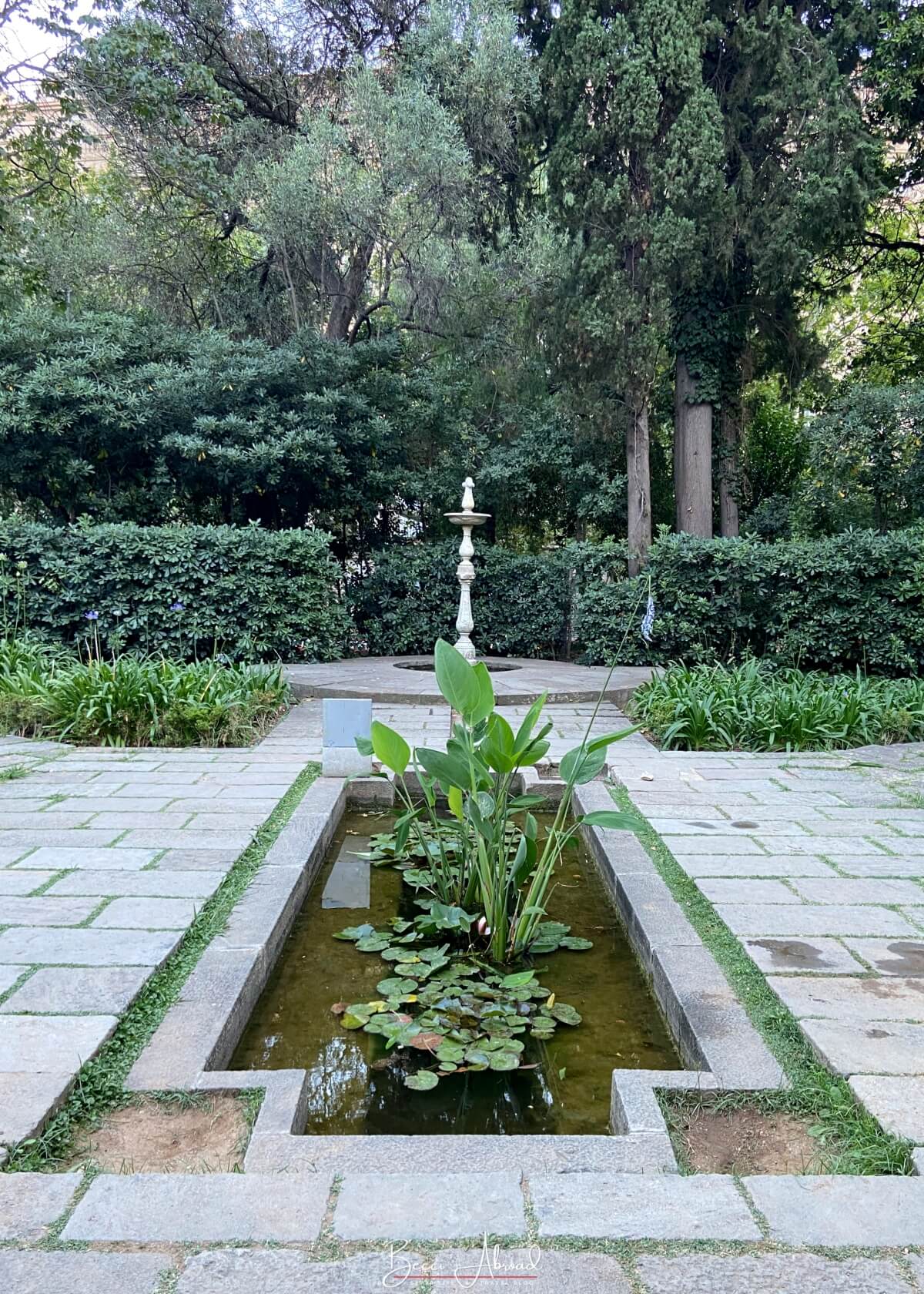

Hidden Gems in Horta and Nou Barris, Barcelona
The neighborhoods of Horta and Nou Barris are true hidden gems within Barcelona!
Both areas are nestled in the northwestern part of Barcelona and offer a peaceful and residential atmosphere that feels refreshingly authentic.
Horta, whose origins date back to 1036, was once a separate municipality before merging with Barcelona in 1904. This district showcases a delightful mix of charming old homes alongside modern apartment complexes.
Nou Barris, which translates to “the new neighborhood” in Catalan, serves both as a neighborhood and a district in the northern part of the city. The area saw significant growth in the 1990s, which is evident in the diverse architectural styles present today.
Let’s dive into some of the great hidden gems and non-touristy things to do in these two Barcelona neighborhoods.
Admire Barcelona’s Most Beautiful Hospital, Recinte Modernista de Sant Pau
One of the most breathtaking yet lesser-known architectural hidden gems in Barcelona is the Recinte Modernista de Sant Pau.
Recinte Modernista de Sant Pau is often referred to simply as Sant Pau, and is a historic hospital and is the largest Art Nouveau complex in the world.
The historic complex is a designated UNESCO World Heritage site located at the junction of the Gracia and Horta-Guinardó neighborhoods, just a short walk from the iconic Sagrada Familia.
Despite its proximity to the more renowned Sagrada Familia, the Recinte Modernista de Sant Pau frequently goes unnoticed by travelers visiting the area. If you’re at Sagrada Familia, take a stroll down Avenida de Gaudí and discover this remarkable piece of architecture for yourself!
Sant Pau was constructed between 1901 and 1930 by the prominent Catalan modernist architect Lluís Domènech i Montaner.
Lluís Domènech i Montaner was one of the most prominent figures of the Catalan modernista movement, and he is especially known for the famous Palau de la Música Catalana.
Sant Pau served as a hospital until 2009, when it was known as the Hospital de la Santa Creu i Sant Pau, or the Hospital of the Holy Cross and Saint Paul.
Following its closure as a hospital, the site underwent restoration to transform it into a cultural and educational center.
The complex features pavilions connected by underground tunnels set alongside green gardens. Each building is adorned with colorful mosaics, intricate sculptures, and stunning stained glass windows, creating an environment that encourages relaxation and exploration.
Today, Sant Pau houses a museum dedicated to its rich history, as well as a cultural center and various organizational offices.
Opening hours:
- March to October
Daily: 9:30 am – 6:30 pm - November to March
Daily: 9:30 am – 5 pm
Location: Carrer de Sant Antoni Maria Claret 167, Horta-Guinardó
Day Trip Hiking in the Collserola Natural Park
The Collserola Natural Park is the perfect hidden gem if you are looking for a short day trip from the city center with a breath of fresh air.
The Collserola Natural Park, or Parc Natural de la Serra de Collserola in Catalan, is a vast green space that spans over 8,000 hectares through the Catalan landscape.
The Collserola range extends along four of Barcelona’s districts, and the mountain tops can be seen from almost all over the city.
The park features numerous hiking trails, cycling paths, and picnic areas. The trails through the Collserola Natural Park offer stunning views of the city and surrounding landscapes.
The Collserola Natural Park is one of my absolute favorite hidden gems in Barcelona! I love how you can jump on the metro and within less than 45 minutes you can be standing in the middle of nature with the most amazing panoramic views of Barcelona!
The Collserola Natural Park is one of the best non-touristy things to do in Barcelona if you want to mix a nature break into your itinerary!
There are many different ways to get to Collserola Natural Park, all depending on which trail you want to try.
The different trails in Collserola Natural Park have different names. The GR 173-3 is a relatively easy Collserola hike to do. You can get to the start of GR 173-3 trail by taking the metro from the city center to Valldaura metro station, and after a short walk, you towards Plaza Karl Marx.
Opening hours: All year round, 24 hours.
Entrance fee: Free of charge
Location: Collserola Natural Park
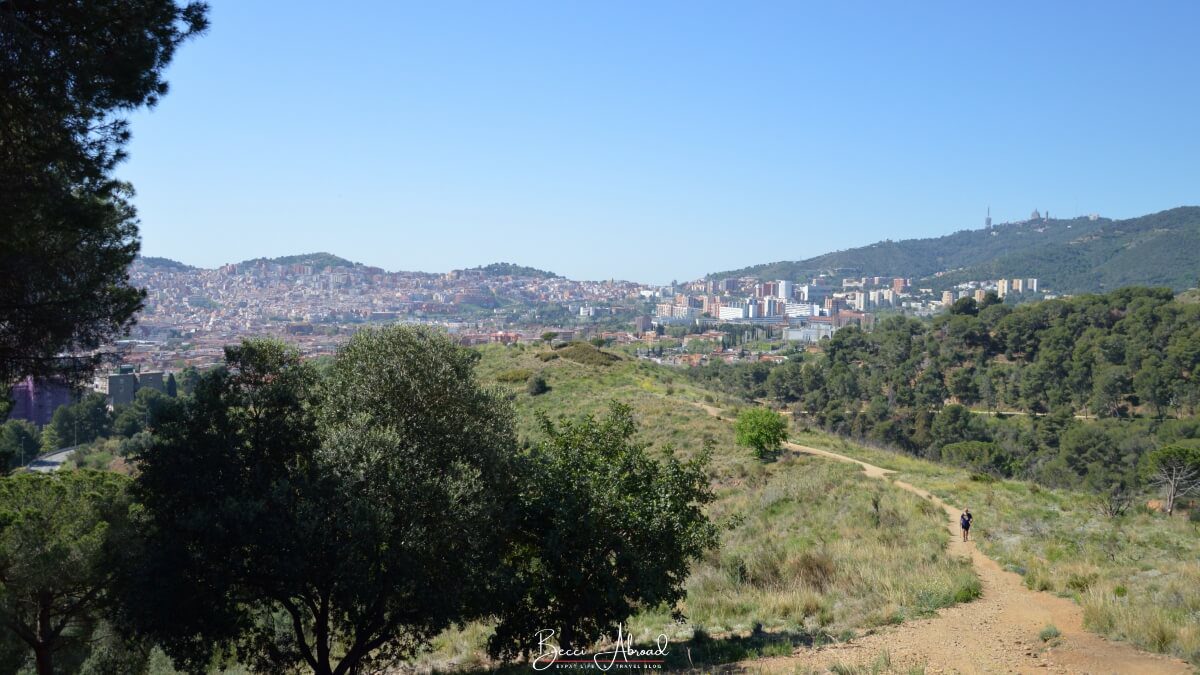
Get Lost at the Horta Labyrinth Park
The Horta Labyrinth Park is one of the more well-known hidden gems in Barcelona, but it still deserves a place on the list!
The Horta Labyrinth Park, also called Parc del Laberint d’Horta in Catalan, is a local park located on the hillside of the Collserola Natural Park in the neighborhood of Horta. The tranquil park offers a peaceful retreat away from the busy city center.
The Horta Labyrinth Park dates back to the late 18th century, and is the oldest conserved garden in Barcelona. The Horta Labyrinth Park is a historic garden located inside the old mansion of the noble and influential Catalan Desvalls family.
The park features beautiful pavilions, fountains, and sculptures. In the center of the park you will find the highlight of the park: a small maze.
The maze consists of two-meter-high hedges, and while it is small, it will manage to confuse you!
Visit Parc del Laberint d’Horta for a relaxing escape from the crowds at many of Barcelona’s other tourist attractions.
Opening hours:
- April to October
Monday – Sunday: 10 am to 8 pm - November to March
Monday – Sunday: 10 am to 6 pm
Entrance fee: 2.23 €
Free of charge on Wednesdays and Sundays after 3 pm.
Location: Passeig dels Castanyers 1, Horta
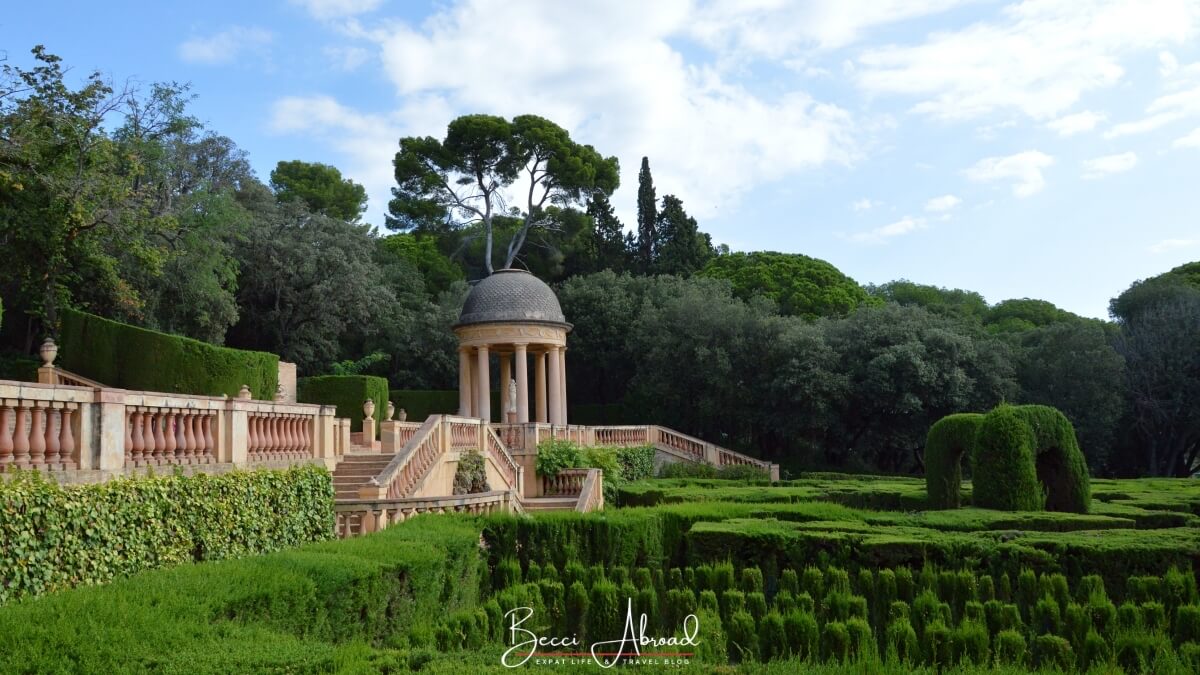


Discover Barcelona’s Non-Touristy Viewpoint, Mirador d’Horta
The Horta viewpoint, also known as Mirador d’Horta in Catalan, is a great hidden gem in Barcelona to get amazing views of the city from above.
The viewpoint is a simple wooden platform located in Horta (as the name indicates).
The Horta viewpoint can be found on the road connecting Cerdanyola and Horta, and is situated on the southern hillside of the Collserola Natural Park.
The panoramic platform in Barcelona was opened for the first time in 1995 and has become a popular place for local teenagers to hang out on weekends.
To get the best view, visit the Horta viewpoint during the afternoon when the sun starts to set in the west overlooking the neighborhoods of Horta and Montbau, as well as Tibidado and the Mediterranean sea.
You can easily get to the Horta Viewpoint by taking the metro line L3 to the metro station Valldaura. The walk to the Horta Viewpoint takes around 20 minutes.
Opening hours: All year round, 24 hours.
Entrance fee: Free of charge
Location: Carretera Horta a Cerdanyola, at the 10.5 kilometers mark, Horta

Get Off-the-Beaten-Path at the Heures Palace and its Gardens
The Heures Palaces, officially known as Palau de les Heures in Catalan, and its gorgeous gardens are one of the best-kept hidden gems in Barcelona.
Palau de les Heures was constructed between 1894 and 1898 by Catalan architect August Font I Carreras, drawing inspiration from 17th-century French architectural styles. The construction of the palace was commissioned by the affluent Josep Gallart Forgas, who made a fortune in Puerto Rico, leading to the palace’s alternate name, Casa Gallart.
The Heures Palace is located on the hillside of the Collserola Natural Park with beautiful gardens at different levels leading up to the main building.
The Heures Palace was the Gallart family’s residence until the Spanish Civil War. In 1958, the building was acquired by Barcelona’s city government. Today, the palace is part of the Mundet Campus for the University of Barcelona.
The gorgeous palace is just a 15-minute walk from the Mundet metro station on the green L3 line. Most visitors to Mundet head directly to the more famous Parc del Laberint d’Horta, and overlook the Heures Palace and its beautiful gardens, making it one of the absolute most hidden gems in Barcelona!
During my visit, access to the interior of the palace was, unfortunately, not available.
So, if you want to get a truly unique off-the-beaten-path experience in Barcelona, you should consider adding the Heures Palace and its Gardens to your Barcelona bucket list!
Opening hours:
- June to September
Daily: 10 am to 8 pm - September to June
Daily: 10 am to 6 pm
Entrance fee: Free of charge.
Location: Passeig Vall d’Hebron 171, Horta
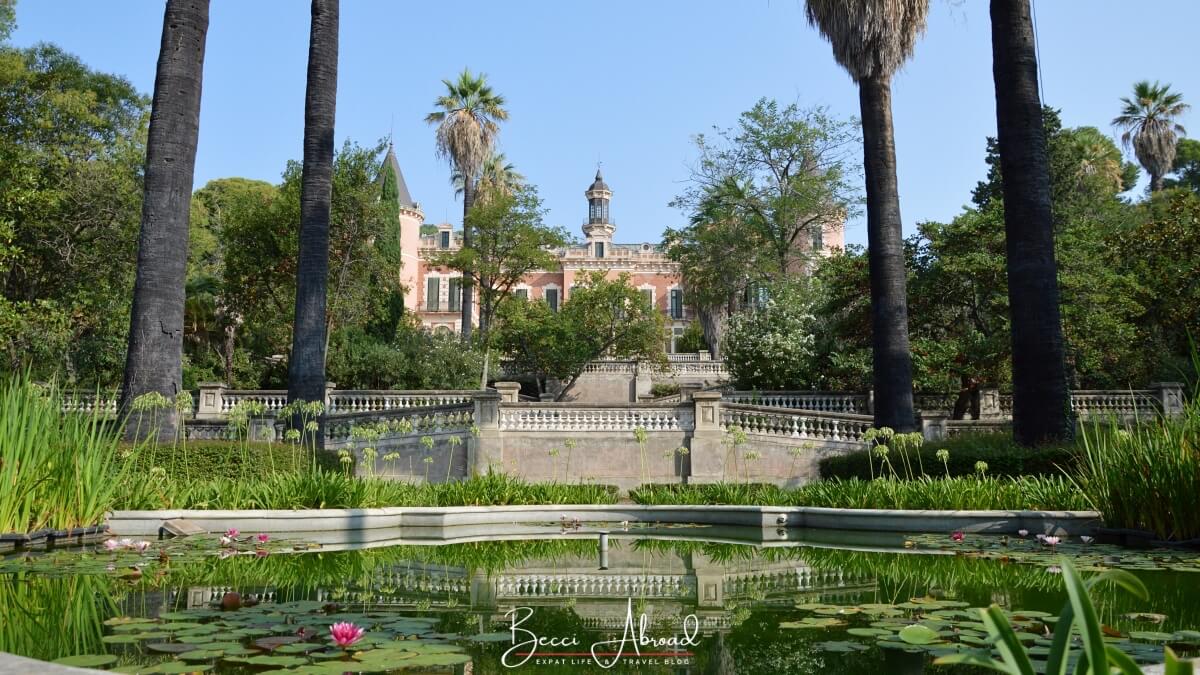

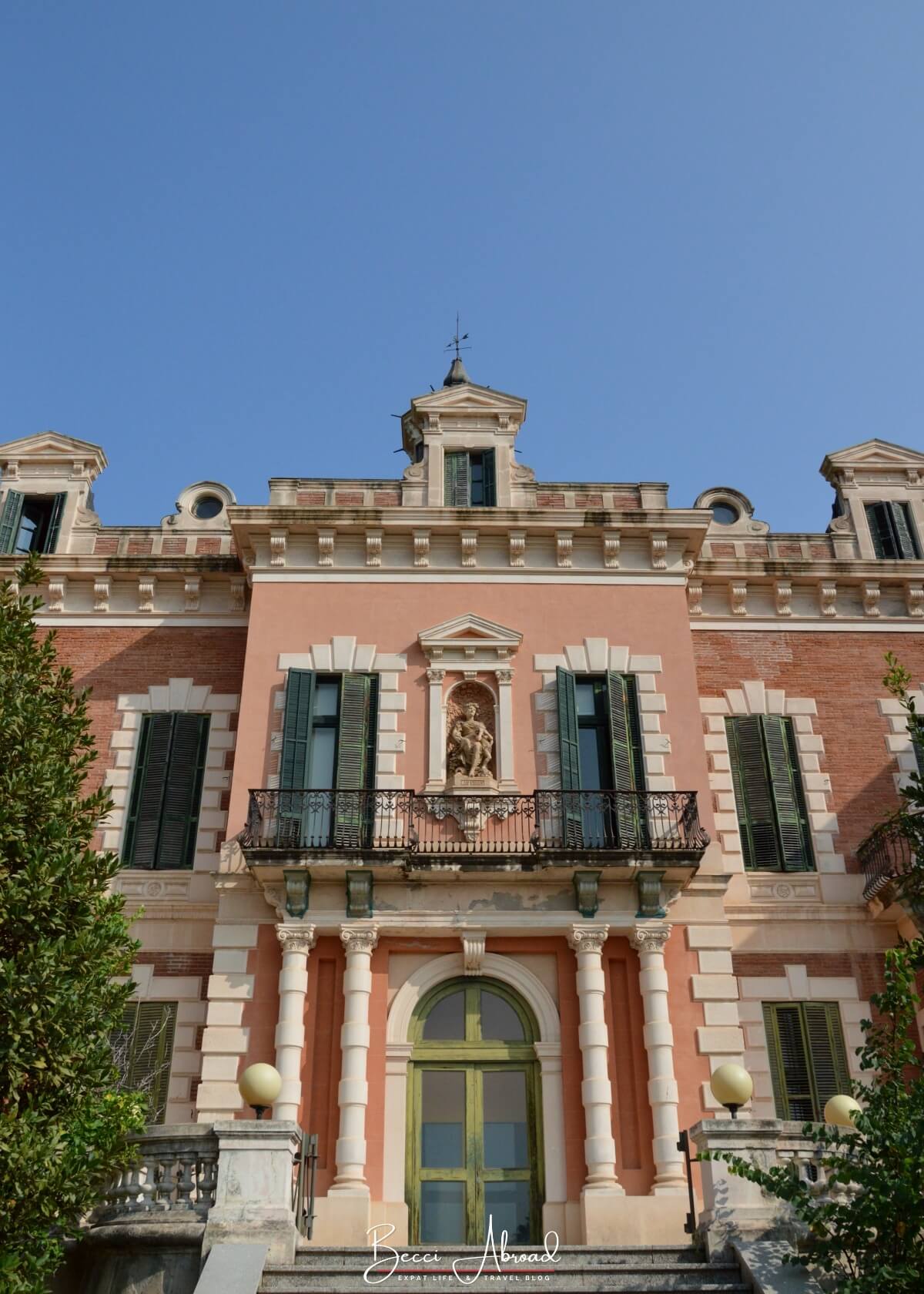
Discover the Hidden Castle, Castell de Torre Baró
Castell de Torre Baró is an unfinished hotel building that looks like an old castle. The building is located inside the Collserola Natural Park on the outskirts of Barcelona in the neighborhood of Nou Barris on the mountain of Roquetes, with a beautiful view over Barcelona.
You can access Torre Baró by taking the local bus or by hiking through the Collserola Natural Park.
To take the bus to Castell Torre Baró, get on bus 182 from the metro station Virrei Amat (line L5) or the metro station Passeig Verdum (line L4).
To hike to Castell Torre Baró, enter Collserola Natural Park at the entrance by the Carretera Alta de les Roquetes. Follow the paths towards Turó d’en Segarra and follow the signs to Torre Baró.
I would recommend it during the hike, at least one of the ways. The views from Collserola are even more stunning than from Castell de Torre Baró.
The hike through Collserola Natural Park to Torre Baró offers some stunning views over Barcelona and can be an amazing day trip from the city.
From the metro station of Valldaura in the neighborhood of Horta, the hike to Torre Baró is around 7 km out and back.
Initially, the trails are pretty uphill and hard work, but they flatten out once you approach one of the main trails inside Collserola. And the views make it worth the effort! It feels like having the whole of Barcelona at your feet.
Opening hours:
- Monday – Wednesday: 10:30 am to 12 pm
- Thursday – Sunday: 10:30 am to 1 am
Entrance fee: The viewpoint is free of charge
Location: Carretera Alta de les Roquetes 309-311, Nou Barris


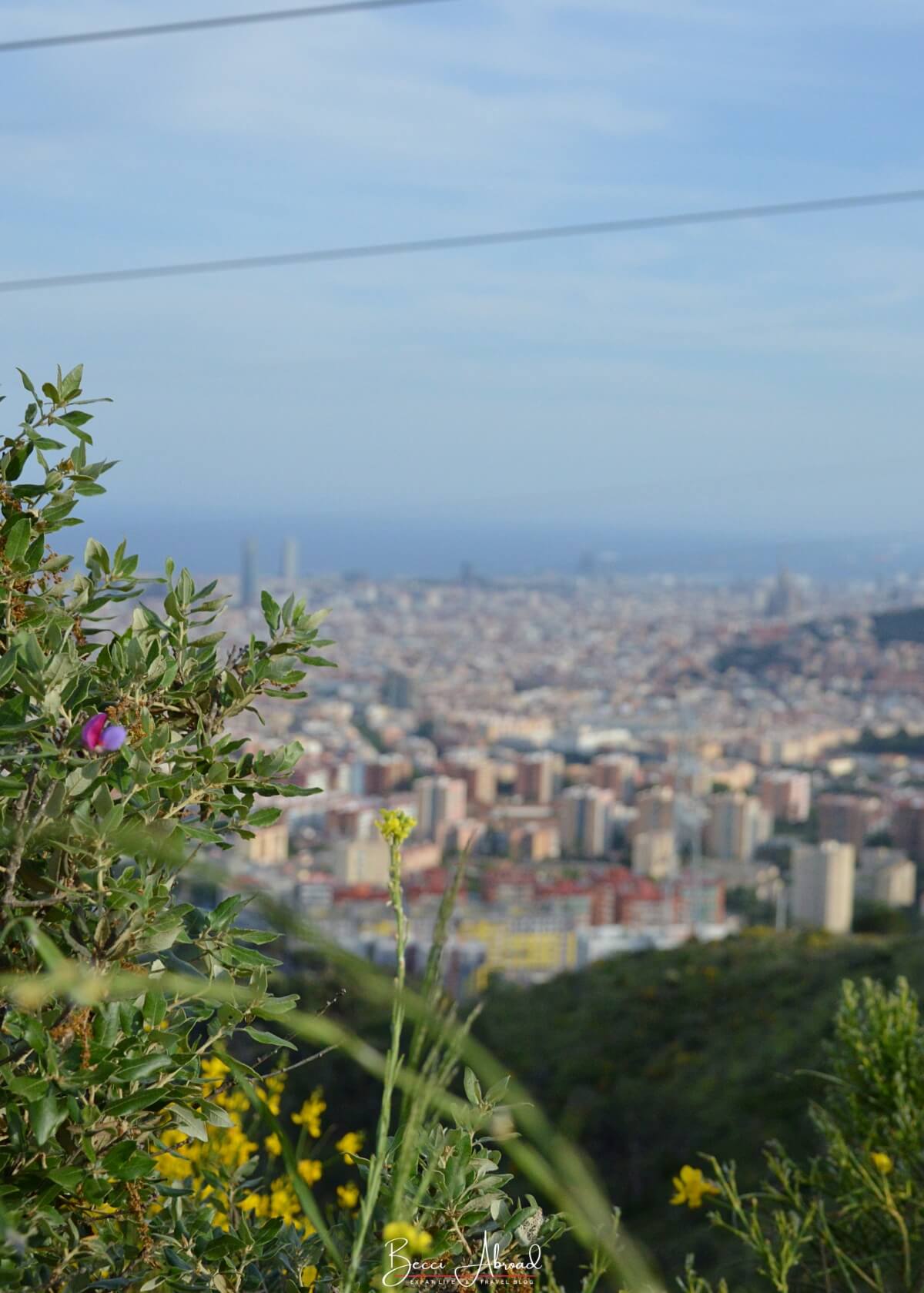
Relax and Enjoy the Views From Parc del Turó de la Peira
Parc del Turó de la Peira is a true hidden gem in Barcelona, missed by most travelers. This local park is located on a small hill in the neighborhood of Nou Barri.
The park is a hidden green oasis far away from the tourist crowds of La Rambla, and a perfect off-the-beaten-path park to enjoy a relaxing afternoon in Barcelona.
Parc del Turó de la Peira features different paths to explore the park. On the top of the hill, you have a viewpoint with great views over the city and the surrounding Collserola Mountains.
Parc del Turó de la Peira is the perfect spot for a picnic after visiting the Parc del Labrint d’Horta or exploring the Horta neighborhood.
Opening hours: Daily 24 hours
Entrance fee: Free of charge
Location: Passeig de Fabra i Puig 396 – 406, Nou Barris


Hidden Gems in Barcelona’s Pedralbes District
Pedralbes, an upscale residential area of Barcelona, offers a unique blend of history, architecture, and green spaces, far removed from the crowded tourist spots.
Here are some hidden gems and non-touristy places to visit in Pedralbes.
Explore the Pedralbes Monastery
The Pedralbes Monastery, officially known as Reial Monestir de Santa Maria de Pedralbes in Catalan, is a remarkable hidden gem in Barcelona where you can explore some of Barcelona’s fascinating history.
The Gothic monastery was founded in the 14th century and is considered one of the oldest monasteries in Barcelona.
The monetary is located in the quiet neighborhood of Pedralbes, which provides a great escape from the bustling streets of the city.
The monastery features a museum dedicated to religious art and artifacts, offering a captivating insight into Barcelona’s rich cultural heritage. Its peaceful Gothic cloister and lush medieval gardens create an ideal backdrop for reflection and tranquility.
This charming monastery is one of the lesser-known tourist attractions in Barcelona.
Opening hours:
- October to March
Tuesday – Friday: 10 am – 2 pm
Saturdays – Sundays: 10 am – 5 pm - April to September
Tuesday to Friday: 10 am – 5 pm
Saturdays: 10 am – 7 pm
Sundays: 10 am – 8 pm
Entrance fee: 5 €
Free of charge on Sundays after 3 pm and all day every first Sunday of the month.
Location: Baixada del Monestir 9, Pedralbes
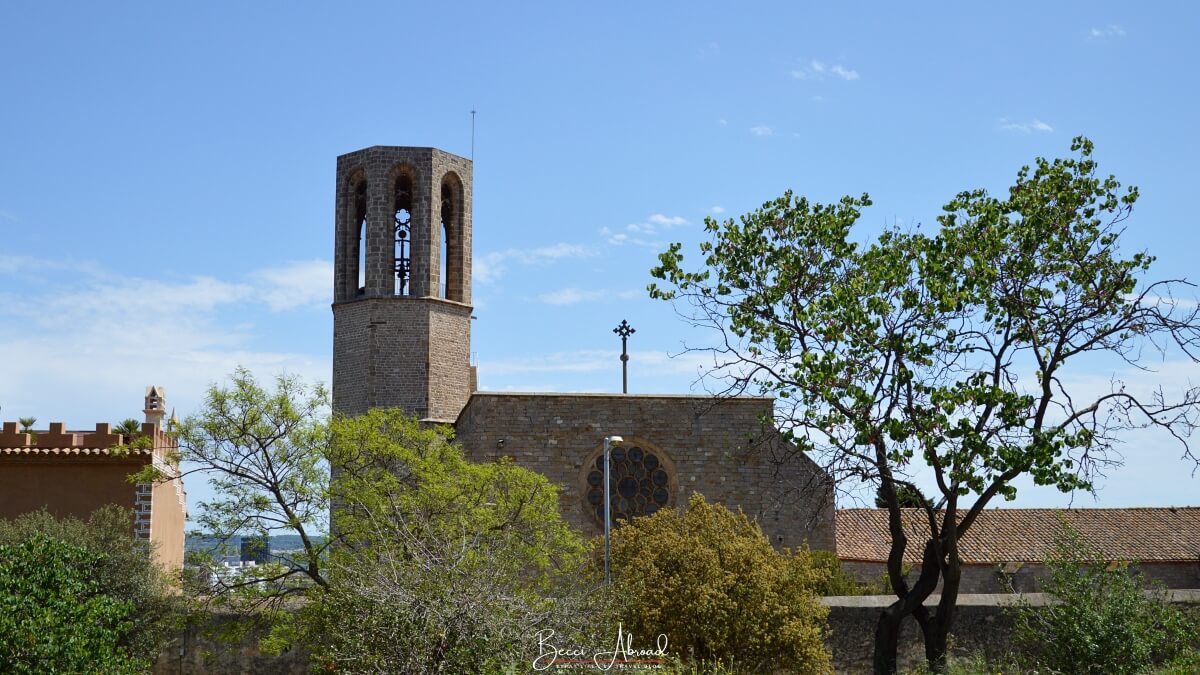
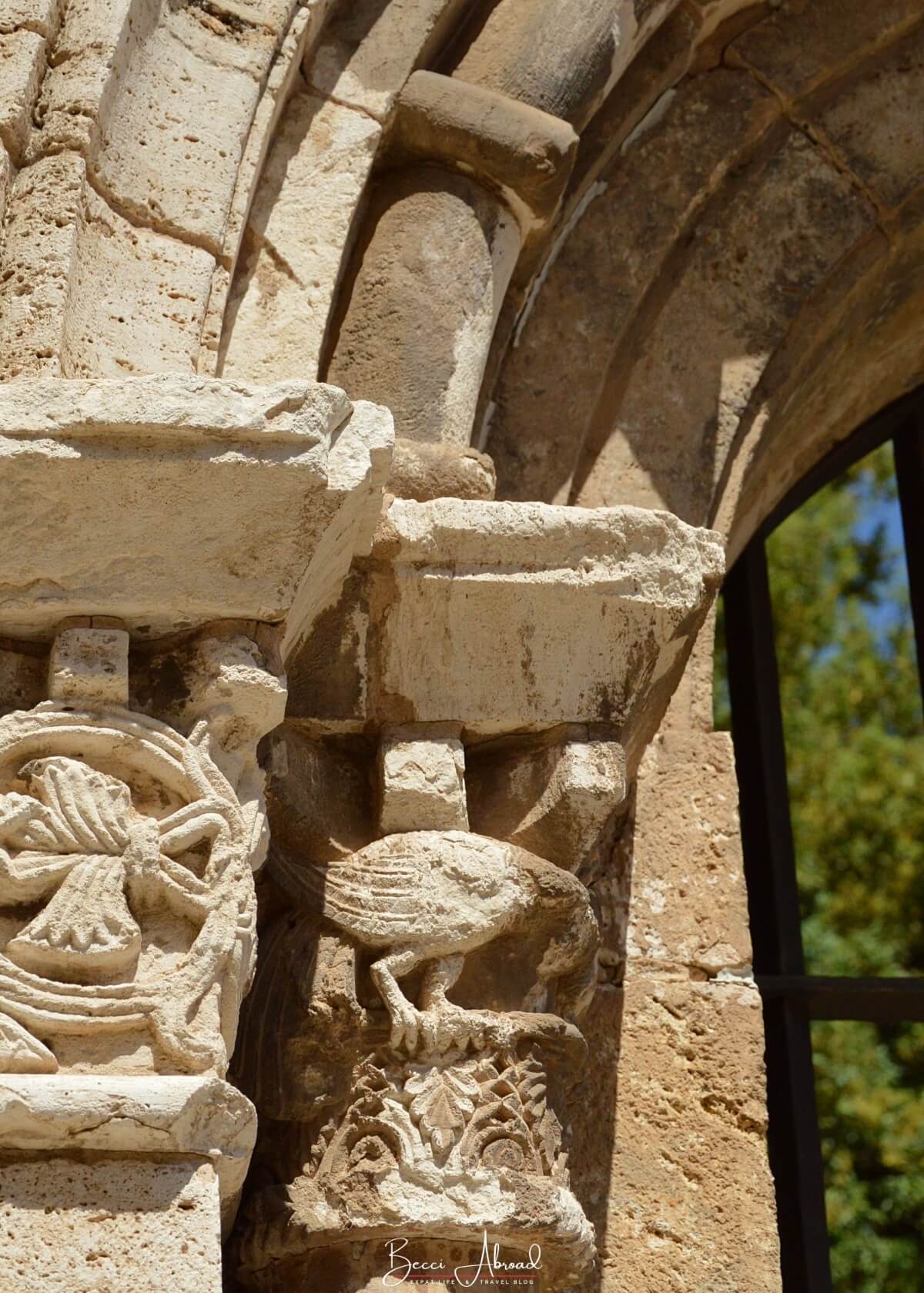

Pavellons Güell
Pavellons Güell is a great hidden gem in Barcelona that often flies under the radar for visitors to Barcelona.
The pavilions are designed by the renowned architect Antoni Gaudí and originally functioned as the entrance to the Güell Estate in the Pedralbes neighborhood of Barcelona.
The pavilions feature Gaudí’s signature curves and colorful ceramic tiles, which create an enchanting blend of fantasy and functionality.
Each structure is adorned with intricate details that reflect Gaudí’s inspiration from nature and Catalan culture.
The Pavilions Güell are currently under renovation, and it isn’t possible to visit them.
Location: Avinguda de Pedralbes 7, Pedralbes
Enjoy the Rose Garden at the Cervantes Park
The Cervantes Park is a delightful hidden gem in Barcelona’s Les Corts neighborhood, renowned for its stunning rose garden.
The Cervantes Park, also known as Parc de Cervantes in Catalan, features over 10,000 rose bushes of more than 300 different rose species.
The best time to visit Cervantes Park’s rose garden is during the spring months when the roses are in full bloom.
Often frequented by locals rather than tourists, Cervantes Park is the perfect non-touristy thing to do in Barcelona to enjoy local life away from the city center. gives you a genuine feel for the city’s community vibes.
So, pack a book, bring a blanket, and immerse yourself in the beauty of nature right in the city center.
Opening Hours: Daily: 8:00 am to 9:00 pm (hours may vary by season)
Entrance Fee: Free of charge
Location: Avenida Diagonal 706, Les Cortes
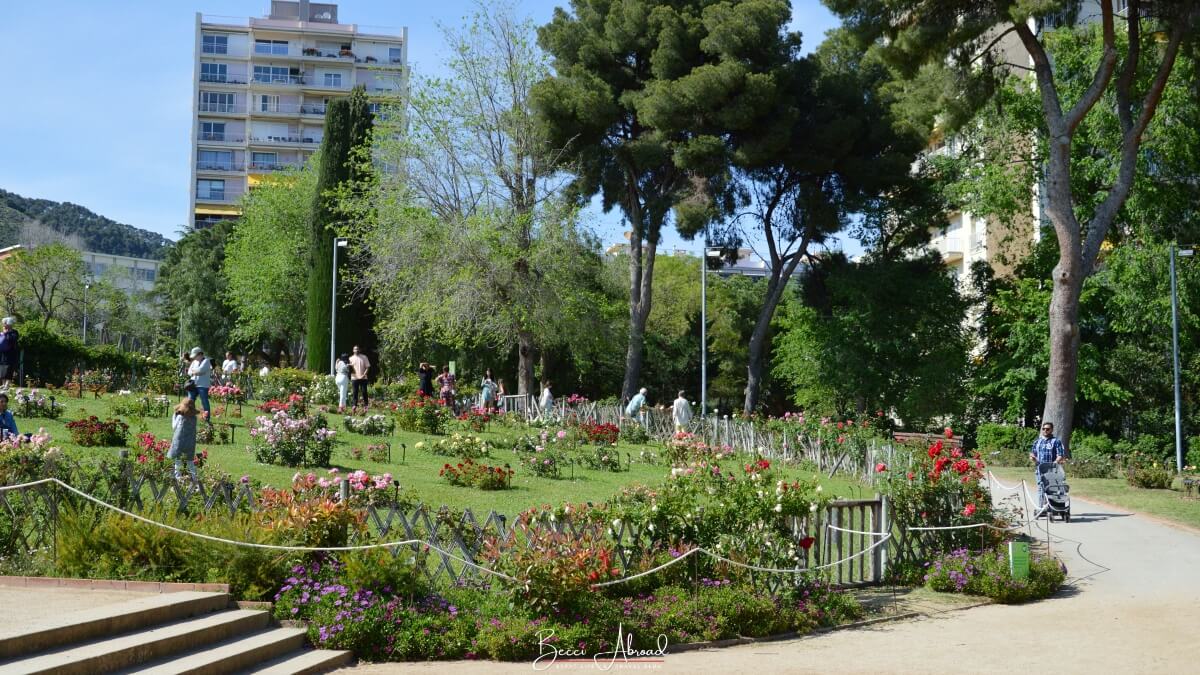
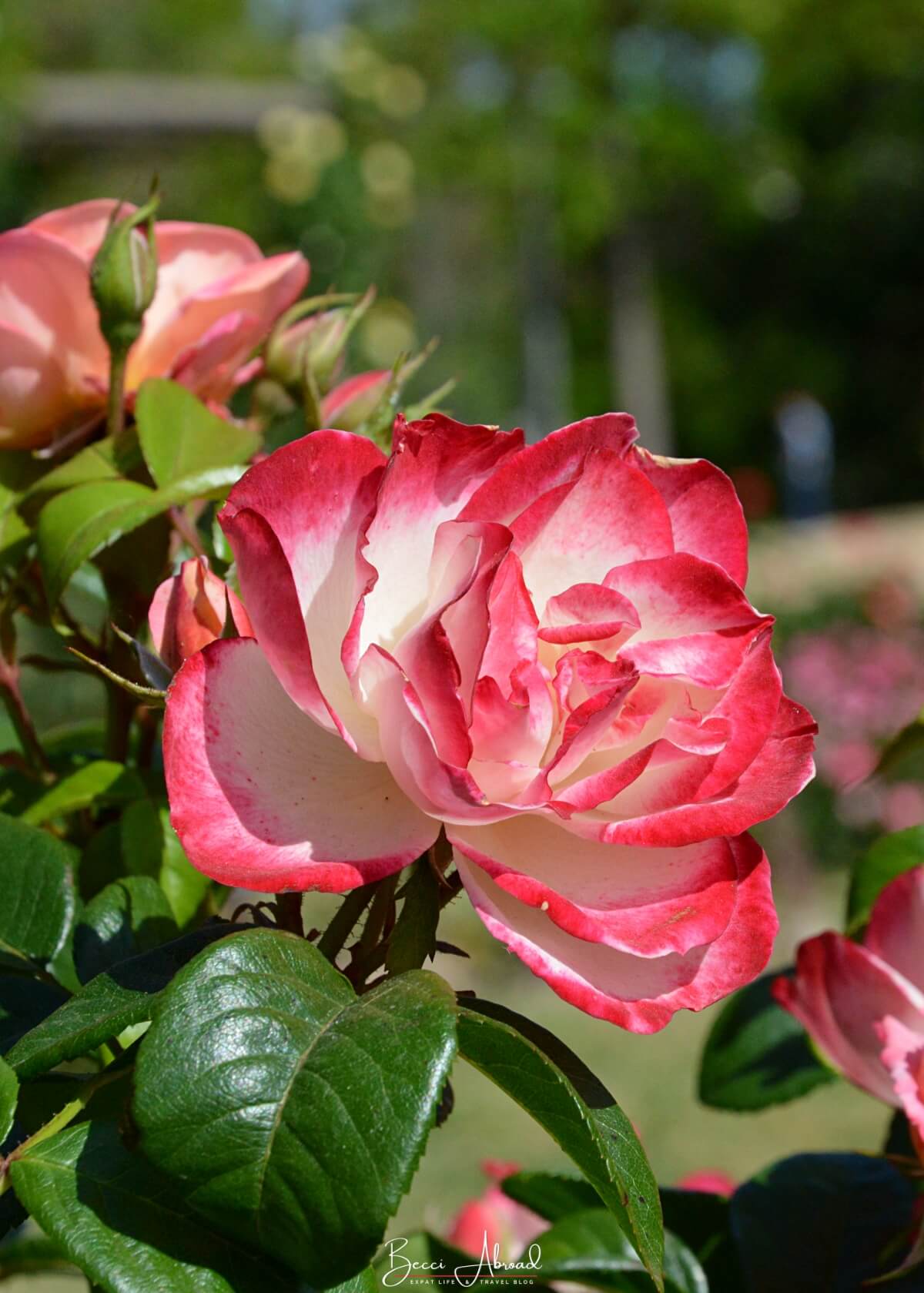
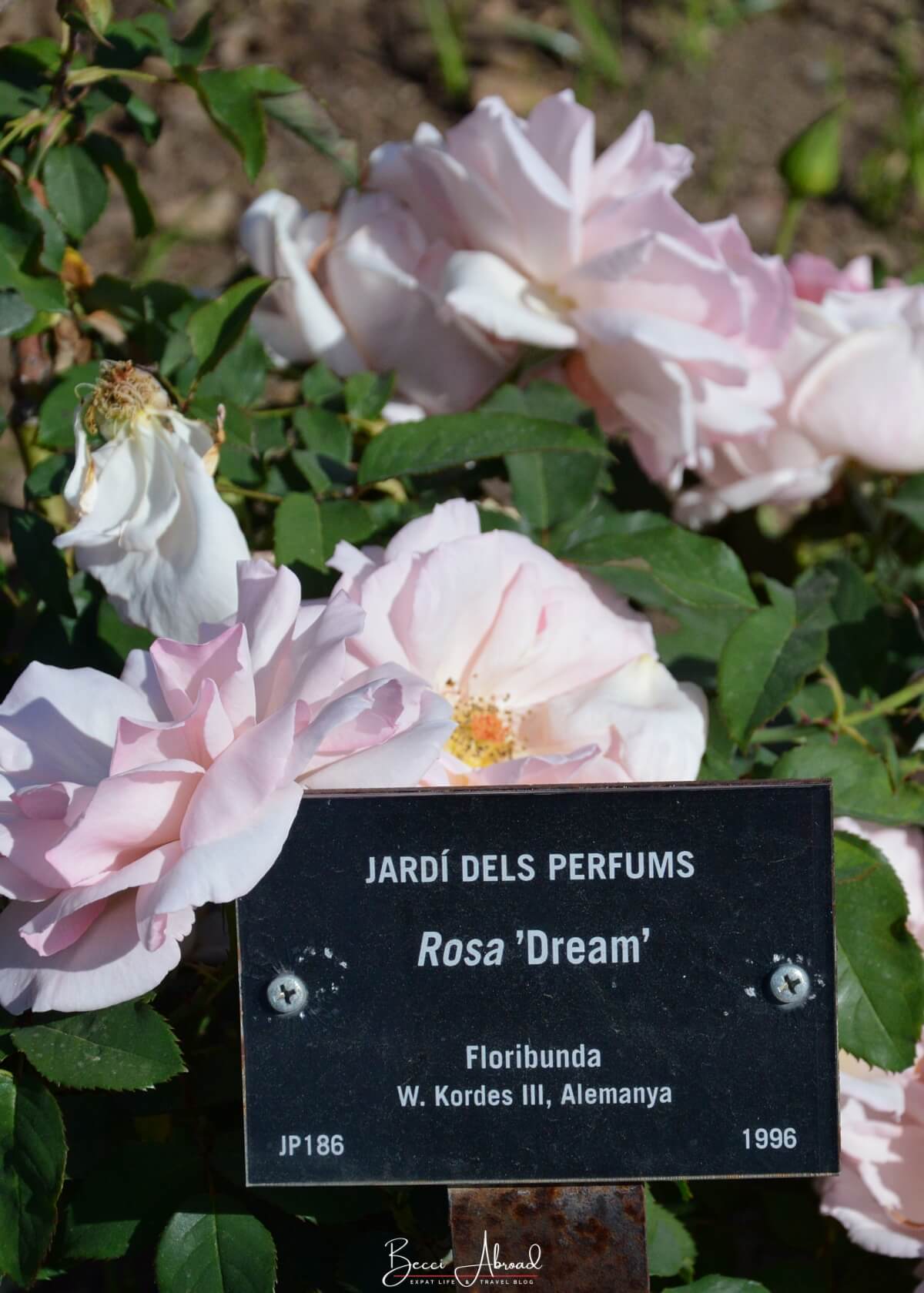
Looking for More Hidden Gems in Barcelona?
When you first start looking for the hidden gems in Barcelona, there are so many interesting places and non-touristy things to do!
The longer I stay in Barcelona, the more places I find. And I’m sure that you will be able to find many more hidden gems and non-touristy things to do in Barcelona than what I could fit into this guide!
I hope you have enjoyed it and found inspiration to get off the beaten path in Barcelona!
Have you visited any of these hidden gems in Barcelona? Which is your favorite? Would you add any of these to your Barcelona itinerary? Share your thoughts and knowledge below!








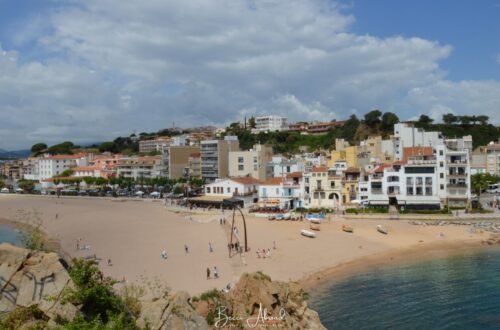
One Comment
Pingback: